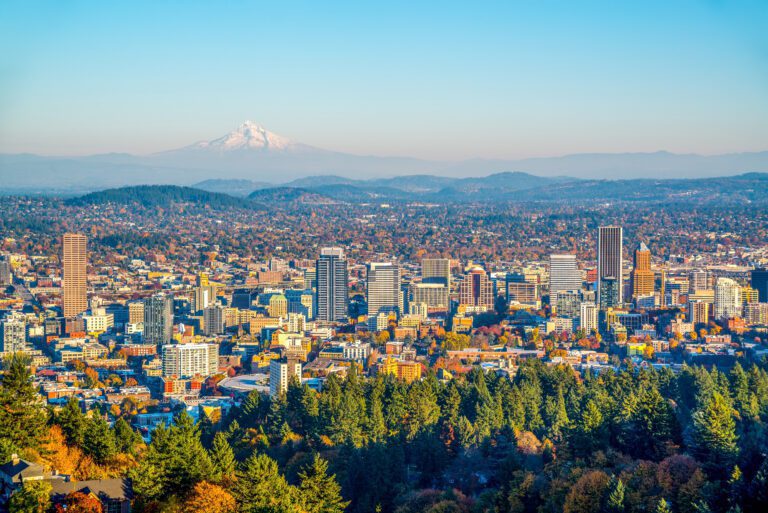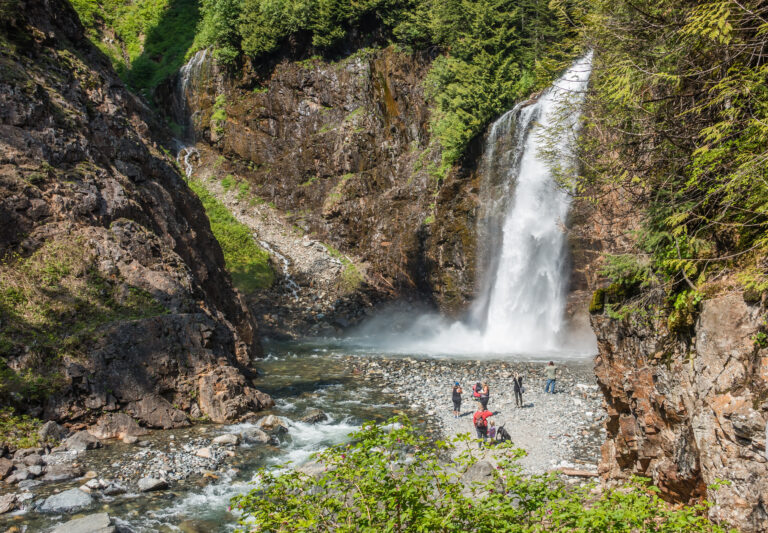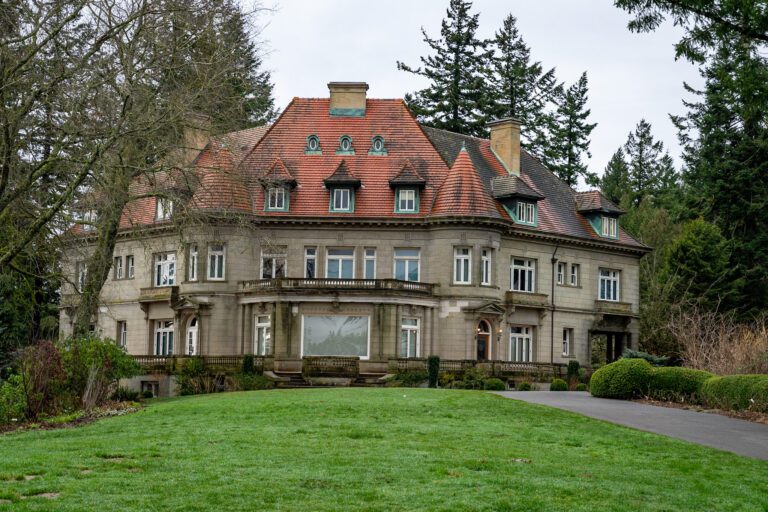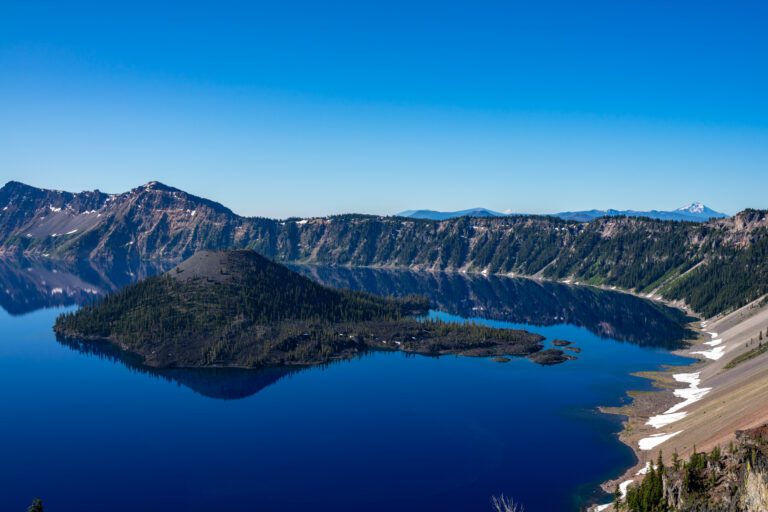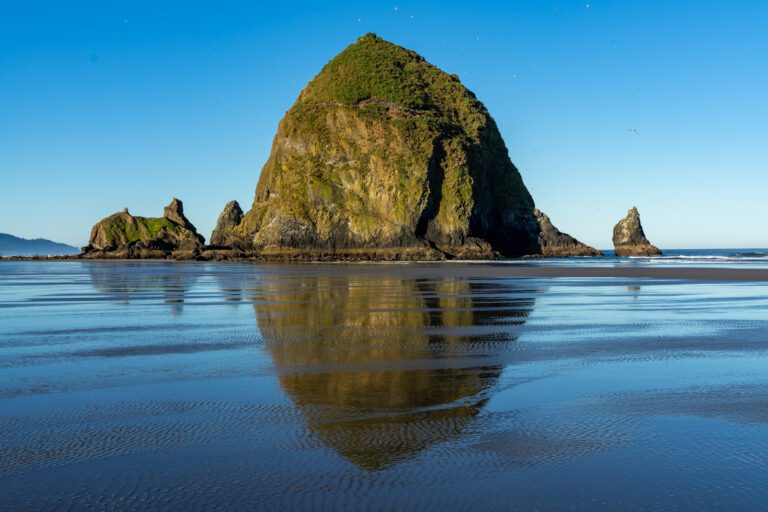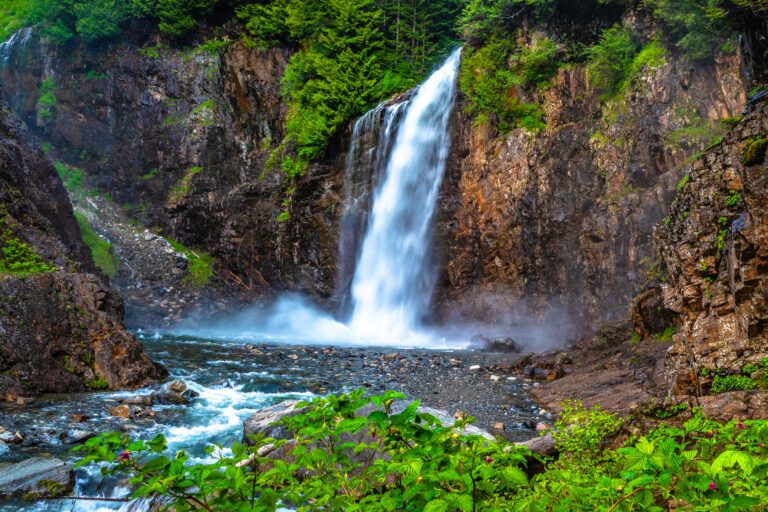25 Staggeringly Beautiful Places to Visit in Oregon
You may think I’m biased when I say that Oregon is the best state in the union, but I’ve got HARD FACTS to back up my claim: Beaches? ✅ Mountains? ✅ Deserts? ✅ Rivers, lakes, and waterfalls? ✅ Vibrant, artsy cities? ✅ Wineries, breweries, cideries? ✅, ✅, and ✅! No sales tax? ✅
Out here in the Pacific Northwest things are bigger and better than you can imagine, and Oregon delivers on anything your heart may desire. Below you’ll find a comprehensive list of the best places to visit in Oregon whether you’re just visiting or if you call the Beaver State home.
So far, I’ve spent 34 years in this magical state, and though I haven’t turned over every stone, I have made a significant dent and am ready to share my findings with you! I’ll take you north and south, east and west, and high and low to cover (nearly) every square inch of my home state.
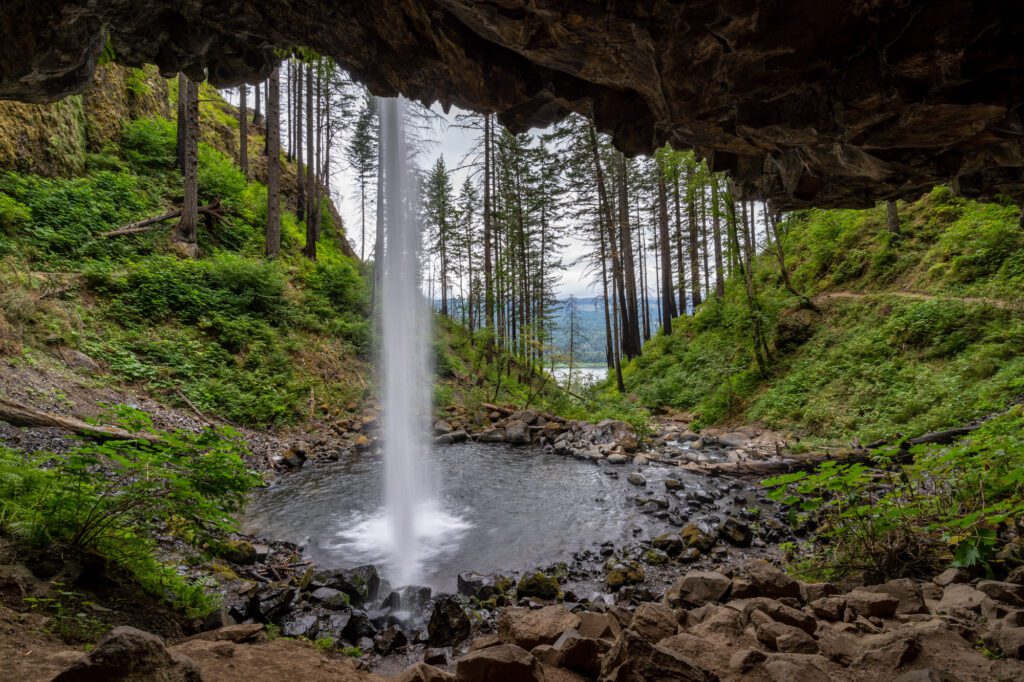
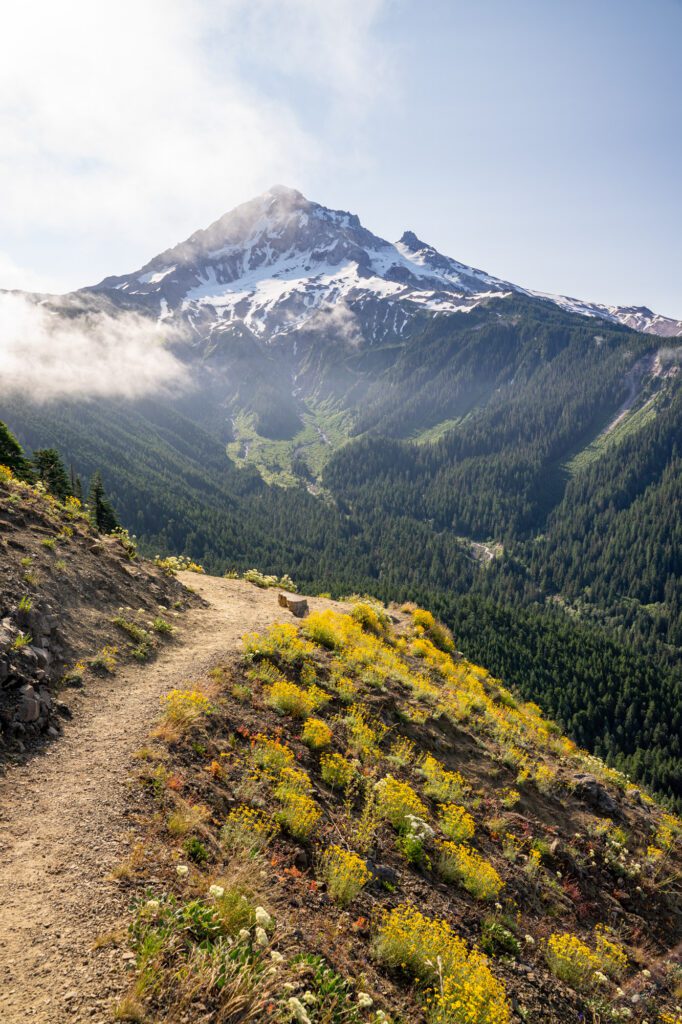
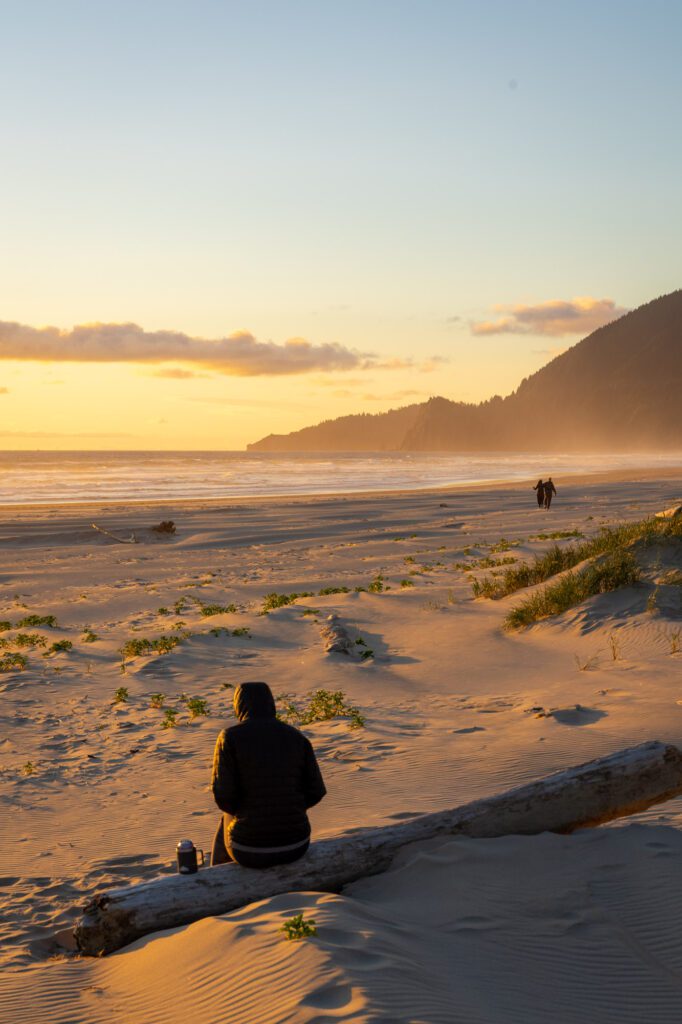
Disclaimer: Some of the links in this post, like hotel and vacation rental links, are affiliate links, meaning at no additional cost to you we make a little bit of money if you click through and book. That being said, we would absolutely never recommend something to you that we don’t stand behind 100%.
The Best Places to Visit in Oregon: An Oregon Bucket List
I’m presenting these in alphabetical order because, if not, it’s like asking a parent to choose their favorite child—I love them all equally and they’re all my favorites!
I’ve tried my best to give an overall description of each destination along with a few specific suggestions of what to do with your time, be it hikes, restaurants, breweries, museums, or hot springs!
The Alvord Desert
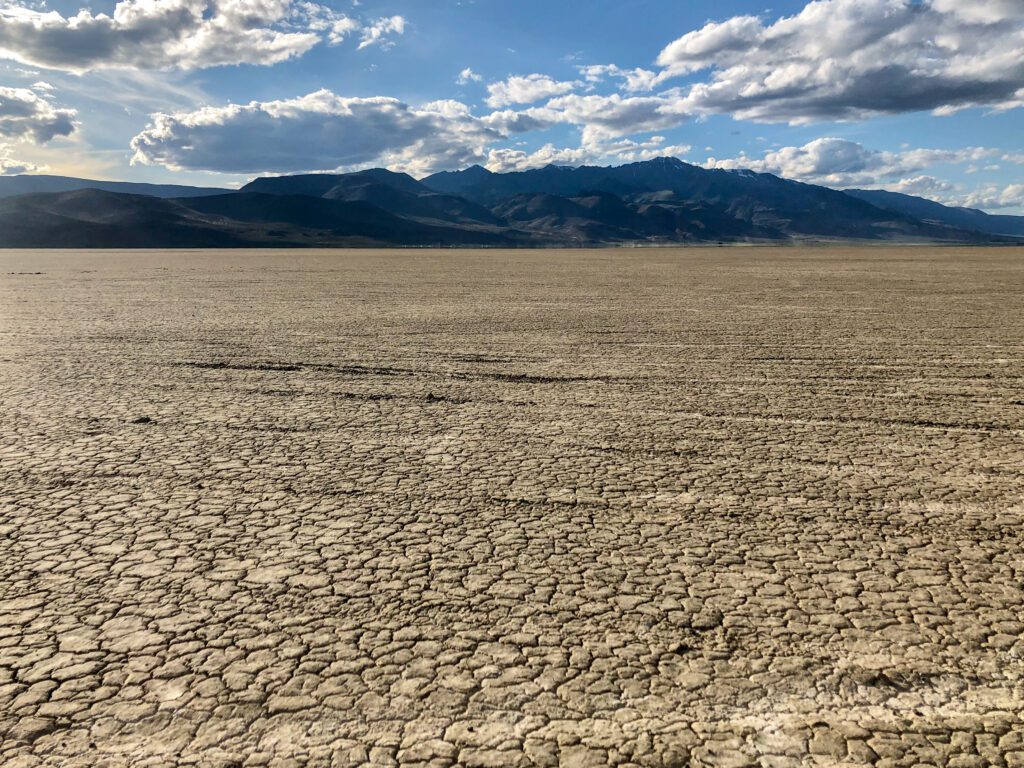
This is one of only two places on the list that I haven’t personally visited but it is quite literally on my bucket list (and I may even go this fall!).
The Alvord Desert (which is actually a dried-up lake bed) has been called the best place for solitude and stargazing in the whole state. In typical desert fashion it will get hot during the day and cold at night, so the best time to visit is probably late spring or fall.
From what I’ve read, it seems like you can camp pretty much anywhere you like, but remember to stake your tent because it will get windy and bring a bike to explore the area!
Admittedly, this place won’t be for everyone as it’s pretty far away from everywhere (way southeast Oregon near the Nevada border). That said, there are two noteworthy attractions that draw me to this barren landscape.
First is the Steens Mountain Wilderness, a very rugged and exposed mountain range with alpine lakes and peaks to one side and a frickin desert to the other! And there are wild horses!!! I’ve had friends who’ve backpacked here and said it was the most remote and mystical experience they’ve ever had.
But the coup de grâce? The Alvord Hot Springs! They offer cheap, clean tent and cabin camping, have hot springs under the stars that go up to 170 degrees, and they sell local beef on site for grilling!
Ashland
Home to the world-renowned Oregon Shakespeare Festival (OSF), Ashland is a small, Southern Oregon town that’s a haven of arts and culture.
You’ll have to drive almost to the California border to get here, but once you do Ashland makes for the perfect destination for a long weekend—not just for its theater, but for the city itself and the outdoor adventures in the area.
The Oregon Shakespeare Festival began in 1935 and though they primarily stick to his plays, they do put on other classical and contemporary plays if you’re not a Shakespeare lover. However, if you are a fan of the Bard, you’ll love seeing his plays in the open-air, Elizabethan Allen Elizabeth Theater.
Ashland is also surrounded by the mountains of the Siskiyou and Cascade Range. In the winter you can ski at Mount Ashland, or hike in the spring and summer on the nearby Grizzly Peak trail for epic views of Mount Ashland and Shasta.
Or, stay in town and explore one of the nicest city parks I’ve ever been to, Lithia Park. And you can’t leave the city without trying some of the Lithia mineral water (which is apparently really good for you, but tastes awful to me. Try it!)
Astoria

The Oregon coast is wild and rugged and though there are several great beach towns to explore, the one with the most charm and history is Astoria.
It was named after John Jacob Astor whose fur company founded this city at the mouth of the Columbia River in 1811, making it the first American-owned settlement west of the Rockies.
You can really feel the history when you walk through town and unlike other beach towns that can have too much of a tourist vibe, Astoria manages to retain a certain working-man grittiness.
Here are some ideas of what to do while you’re in town:
Astoria Column: What could be a cheap, tourist attraction is actually one of my favorite Astoria activities. The Astoria Column was built in 1926 and though it’s only 125 feet tall, it sits on the top of Coxcomb Hill overlooking the river so when you finish climbing the 164 spiral-staircase steps to the top, you can see foreeeeeeeeeeeeever. It’s really a phenomenal view and well worth the workout. It costs $5 per car to get there and you can buy glider airplanes in the gift shop to send off from the top. DO IT!
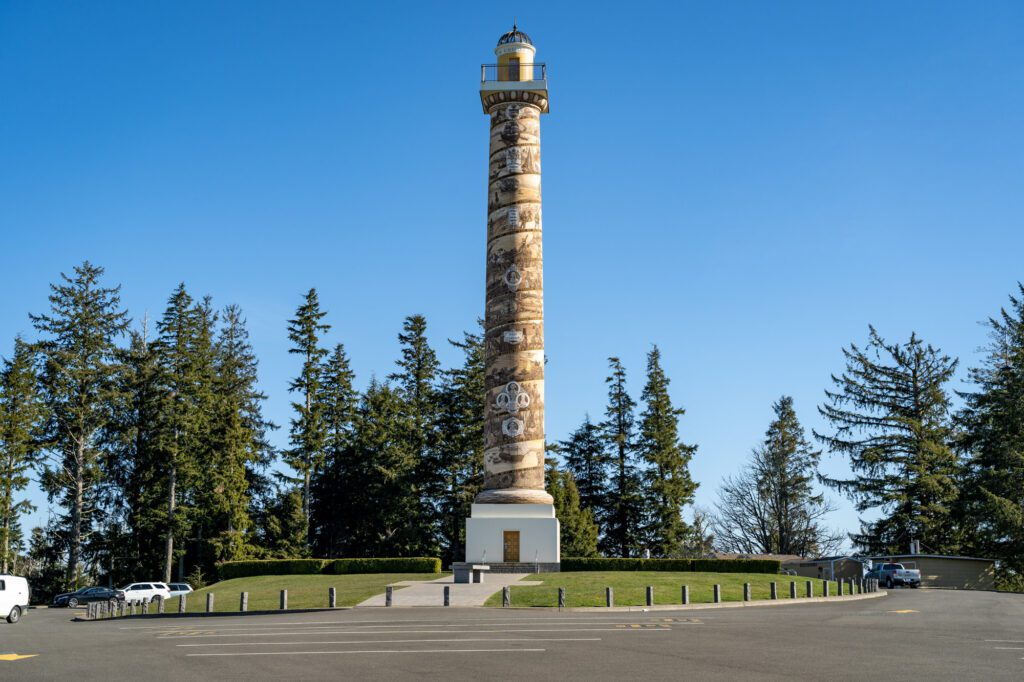
Fort Stevens State Park and Lewis and Clark State Parks – These are two great parks that should be part of any trip to Astoria. Fort Stevens is much bigger and offers hiking trails, campgrounds, a lake, great beach access, and is home to the wreck of the Peter Iredale (which a lot of people love and I respect that, but for me it’s a little underwhelming). What’s more fun (for my fellow history nerds) is going to the nearby Lewis and Clark National Historic Park to see 19th century fort replicas, docents dressed in old-timey clothes, and if you’re lucky you’ll get to watch historical demonstrations like quill pen writing, flint fire starting, and hide tanning with real cow brains!
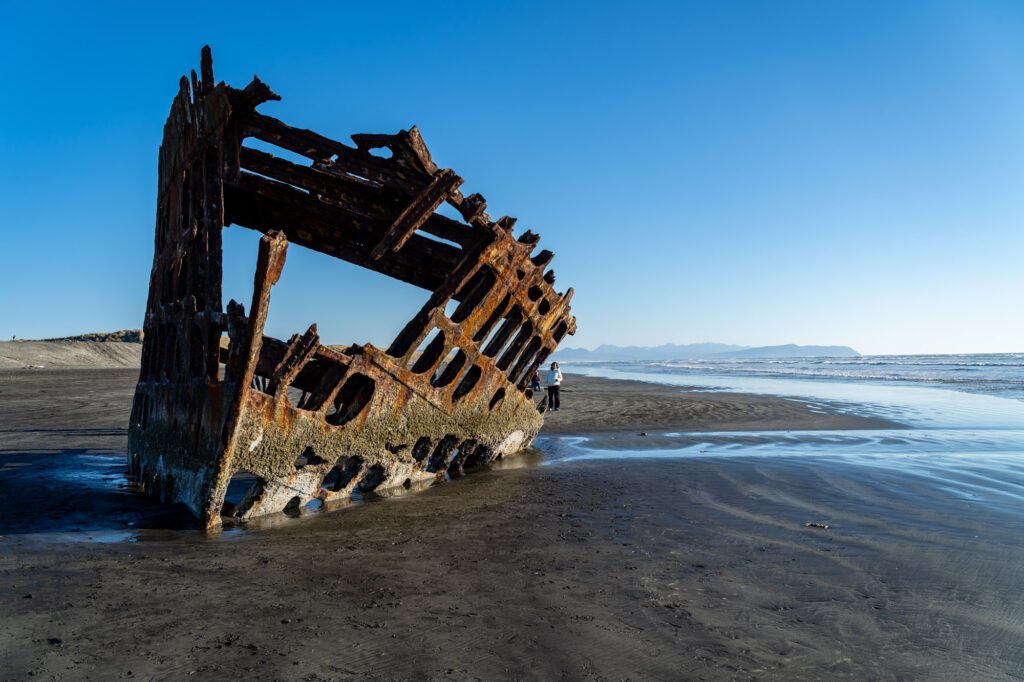
Blue Scorcher and Coffee Girl: The two best coffee houses in town! Blue Scorcher has been a mainstay of downtown Astoria for over 15 years and I almost always stop here for a cup of joe and an oatcake. Unless of course I stop at Coffee Girl which is located in the old Bumble Bee Cannery building on Pier 39. There’s a free museum there and you can sit with your coffee and carrot cake right out on the pier and watch the ships pass.
Goonies house: Yes, the very house where Chunk does the Truffle Shuffle. You can go up to the gate, but not to the house itself since it’s privately owned, but it’s still so cool for those of you jonesin’ for a hit of 80’s nostalgia.
Youngs River Falls: A super easy (not even half a mile) out & back hike to a 54 foot falls that’s pretty to look at and great to swim in! Only ten miles south of town.
Read More: Exactly What to Do in Astoria, Oregon
Bend
Bend is one of the fastest growing cities in the country and every time I visit I feel like I’m seeing a whole new town—it’s hard to keep up!
However, some tried and true things remain the same and they’re what makes Bend such a great place to live in and visit. Plus, because it’s conveniently located in the middle of the state, it’s one of the best places to go in Oregon no matter where you’re coming from.
The Deschutes River runs right through town and one of the best ways to see the city is to float the river. And don’t worry if you forgot to pack your inner tube because you can rent gear and grab a shuttle back to your car at Tumalo Creek Kayak & Canoe.
You may also want to try your hand at the state-of-the-art (and FREE!) Bend Whitewater Park for surfing or kayaking; I would have never believed such a thing existed until I saw it with my own two eyes.
If water sports aren’t your thing, Bend is also teeming with exceptional hiking options. Tumalo Falls is incredibly popular and incredibly beautiful (even in winter!) and only 30 minutes outside of town.
If you don’t feel like leaving the comfort of the city, hike up Pilot Butte then walk a mile into downtown Bend to enjoy some fine food and beer!
Like Portland, there’s no shortage of breweries or grub so your most difficult decision will be choosing where to eat. Try the relatively new (and woman-owned and operated!) Spider City Brewing, or GoodLife Brewing who’s been serving up incredible beers for 11 years now in Bend.
Cannon Beach
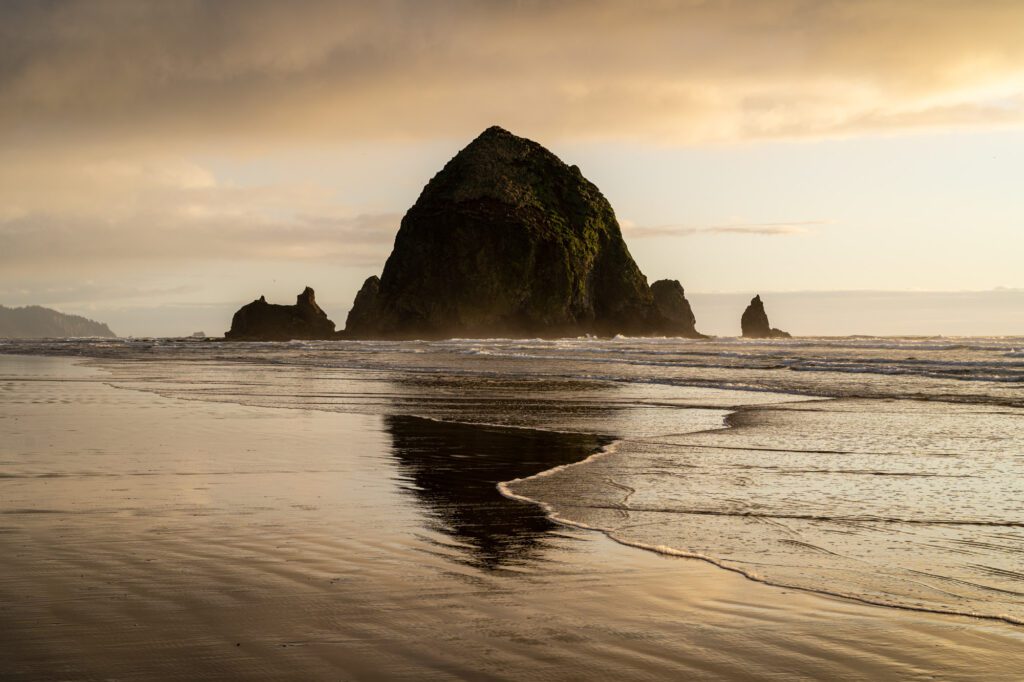
Admittedly, Cannon Beach is not my favorite coastal town in Oregon (don’t get me wrong—I do like it, but prefer the smaller, kitchier ones instead), but its location is unbeatable!
First of all, it’s one of the closest beach towns to Portland and its home to the famous Haystack Rock. It also has some great beer (Cannon Beach Hardware and Public House, yes—it’s also a hardware store!), restaurants (Cannon Beach Smokehouse), and coffee shops (Insomnia).
But the best part about Cannon Beach is that it’s flanked by two outstanding state parks, Ecola State Park and Oswald West State Park.
Ecola State Park has one of my favorite beaches on the coast, Indian Beach. It’s also quite popular with local surfers, but remains surprisingly secluded given how rad it is.
At the park, you can head out one of the many trails around you, but my favorite is this 2.8 mile loop (that I actually don’t do as a loop, rather an out & back along the trail closest to the water).
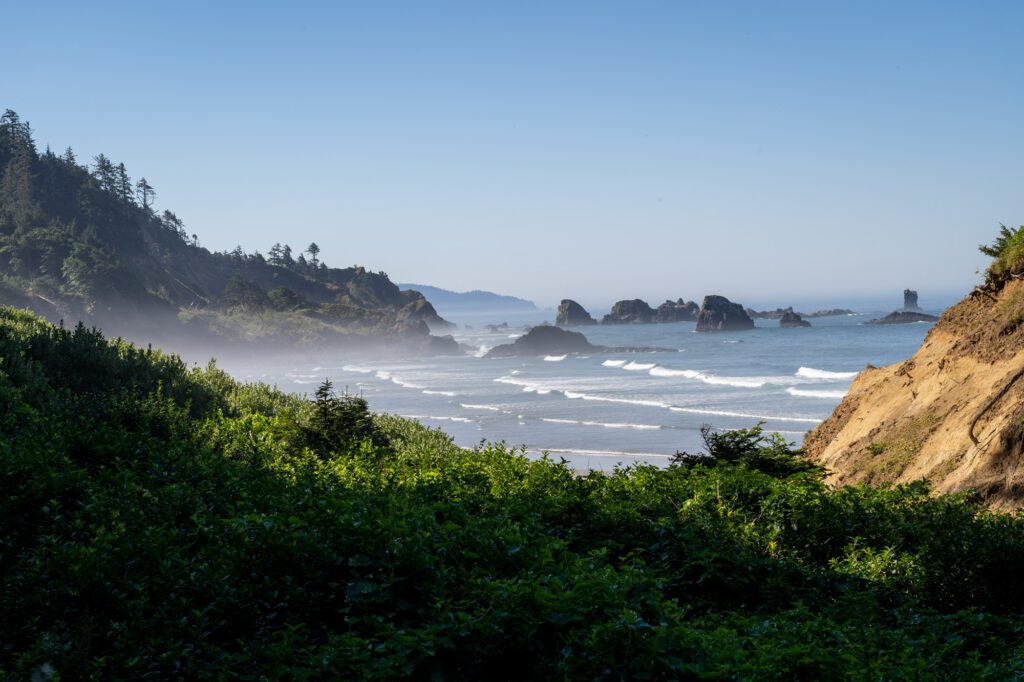

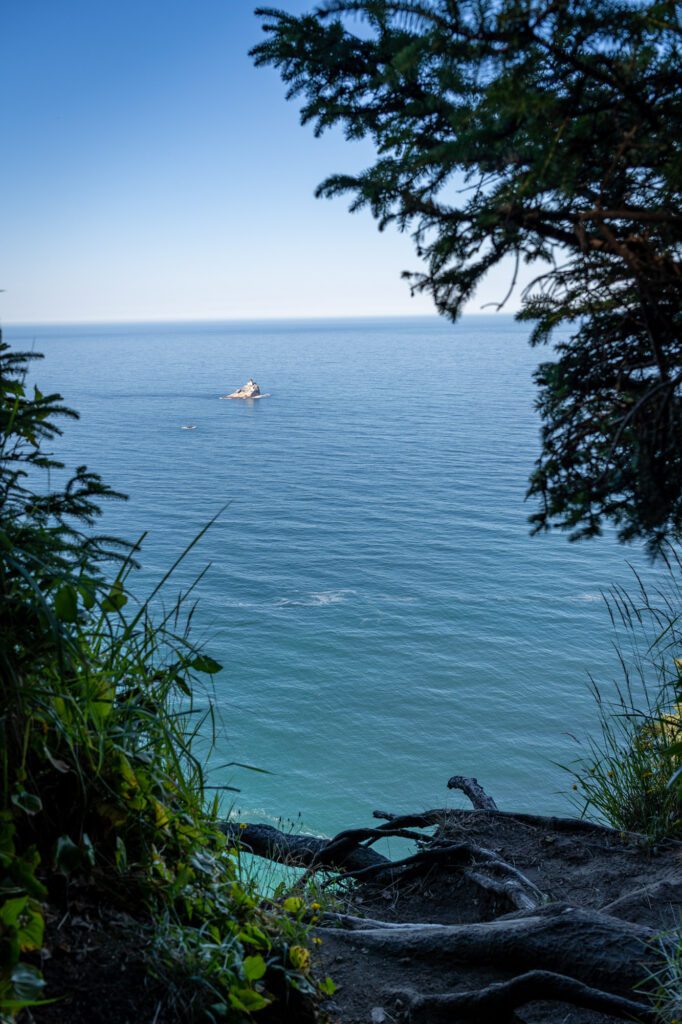
Don’t forget to look out at “Terribly Tilly,” the doomed lighthouse that was deemed too dangerous to remain open.
Oswald West State Park is just south of Cannon Beach and though it only stretches four miles along the coast, it’s some of the most beautiful scenery you’ll find.
The main beach here is called Short Sand and it’s a relatively easy hike in where you’ll be surrounded by cliffs and caves and tide pools.
Oswald also puts you right by Neahkahnie Mountain that’s said to have Spanish treasure buried at its base and is one of the best hikes on the coast. There are a few ways to get to the top, but this hike is the shortest (though it’s still not easy!).
From the top, you’ll have a great view looking south over Nehalem Bay if it isn’t too overcast.
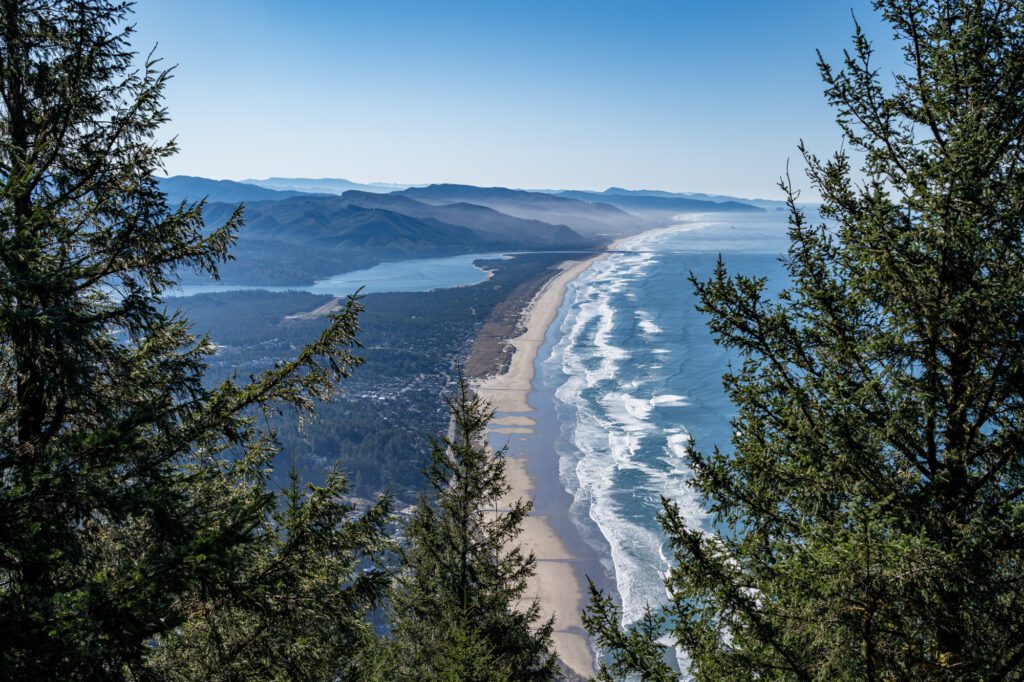
Read More: All the Best Things to Do in (and Around) Cannon Beach
Cape Perpetua
Cape Perpetua Scenic Area is an 800 foot headland that also happens to be the highest point on the coast you can get to by car. Start your visit at the overlook to watch the crashing ocean below and trace the winding 101 highway as it makes its way down the coast.
Then get back in your car and drive down to Thor’s Well (best name ever). It’s believed to be an old sea cave whose roof collapsed and now it looks like a sinkhole that’s constantly sucking in ocean water into a bottomless pit. Is it really bottomless?!? Well, no, but it sure looks cool!
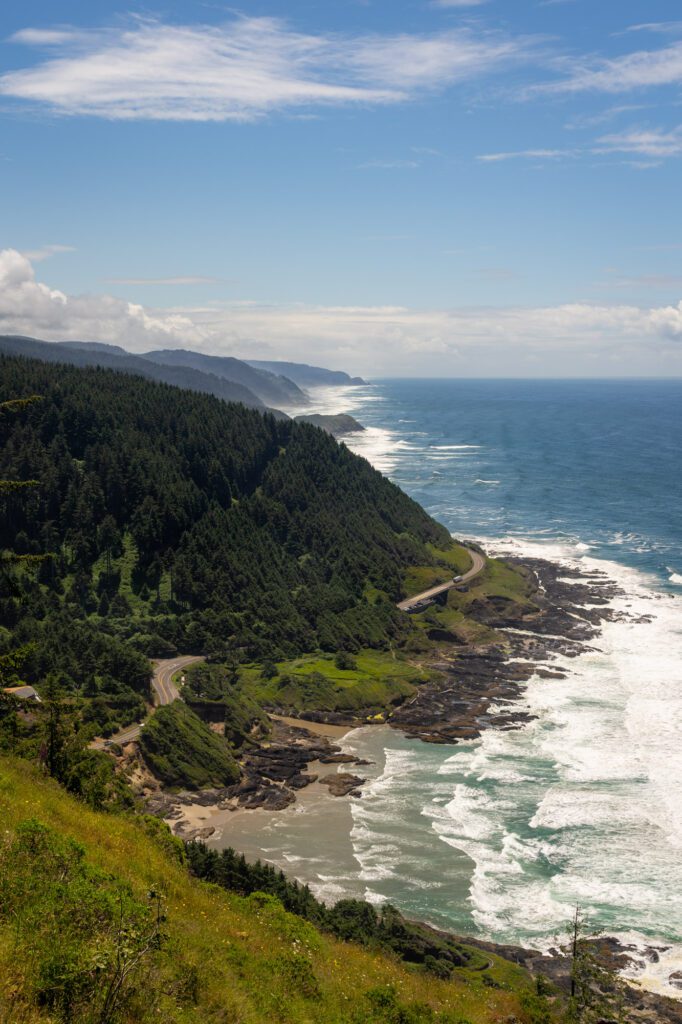
Another rare oceanic wonder that’s right by Thor’s Well is the Spouting Horn which looks just like—a spouting horn! Technically it’s called an “ocean geyser,” and while this isn’t the only one on the coast, it is the easiest to get to.
It’s especially impressive at high tide or during a storm when the water shoots up into the sky and makes a slight hissing noise. If you’ve missed high tide, no worries because this area abounds with tide pools!
And, though it’s technically ten miles south of Cape Perpetua, the Heceta Head Lighthouse that’s been in service since 1894 is one of the most picturesque on the coast.
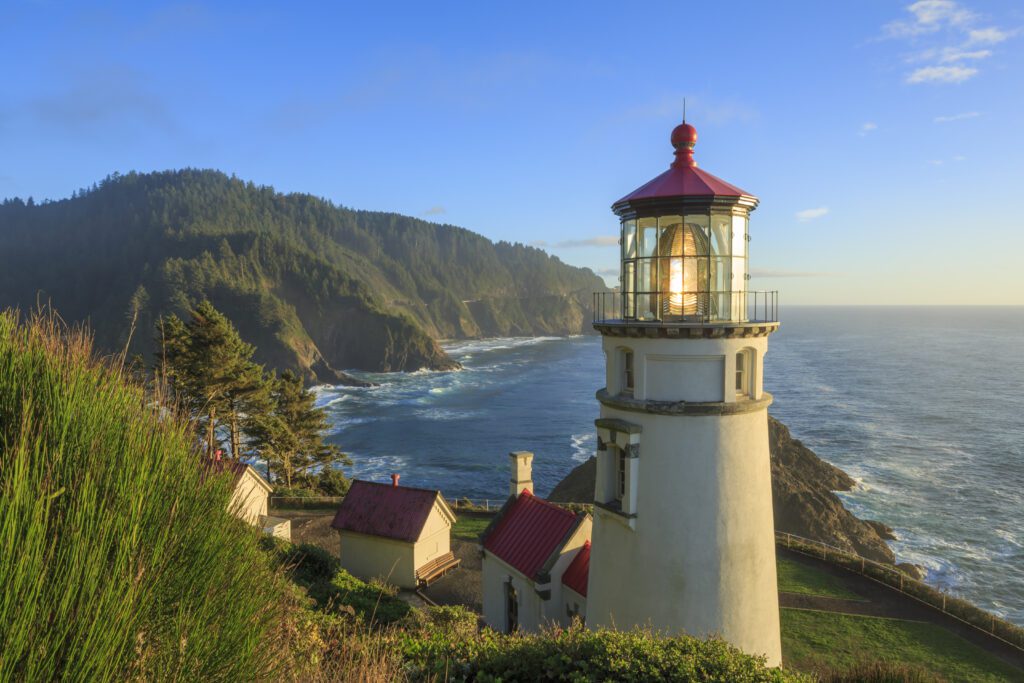
And on your way down, you can stop at the Sea Lion Caves! It does cost $15 to go down into the cave, but it’s very impressive and not as tourist-trappy as you may think.
Read More: How to Plan an Incredible Oregon Coast Road Trip
Cascade Lakes Scenic Byway
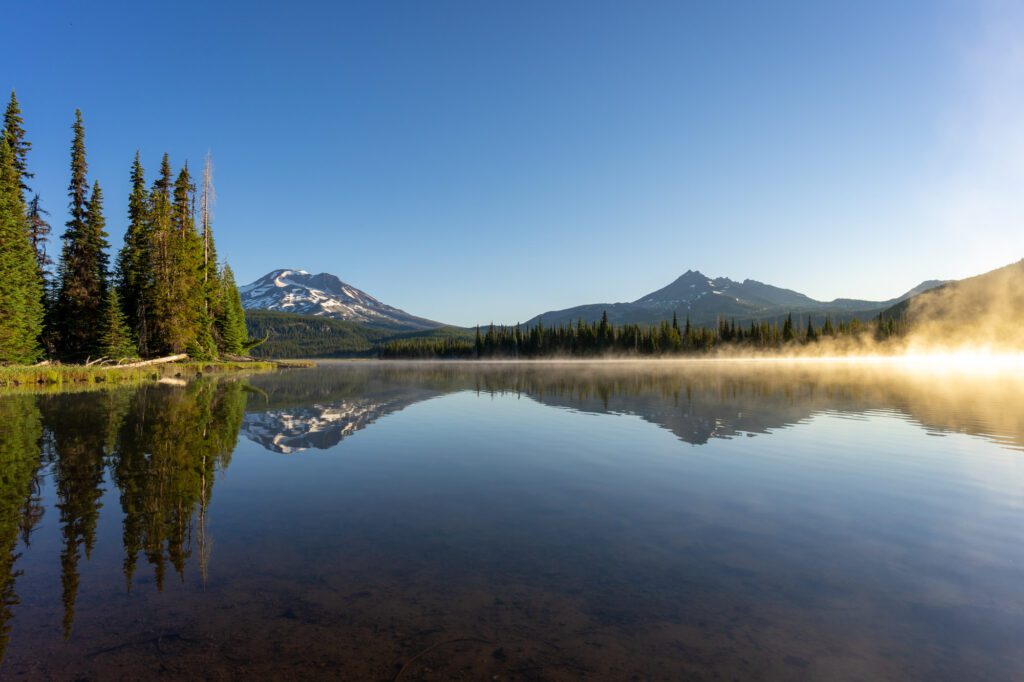
I love me a scenic byway, and this one may just be the best in Oregon. The whole Cascade Lakes Scenic Byway is 66 miles, but you may get distracted by all the incredible stops along the way.
Note: this is a seasonal route since the road closes west of Mount Bachelor sometime between October and June depending on the snow pack.
Starting in Bend and heading west, you’ll pass the peaks of Mount Bachelor, South Sister, Broken Top, and 10 different alpine lakes! The best option for swimming is Elk Lake and there’s also a great campground here.
For those who prefer to kayak or SUP, you can’t beat Sparks Lake (catch it for the sunrise!) or the turquoise waters of Devils Lake, both of which also have killer hiking trails.
The Green Lakes Trail is long but beautiful and makes an easy overnight backpacking trip (though it can be done as a day hike).

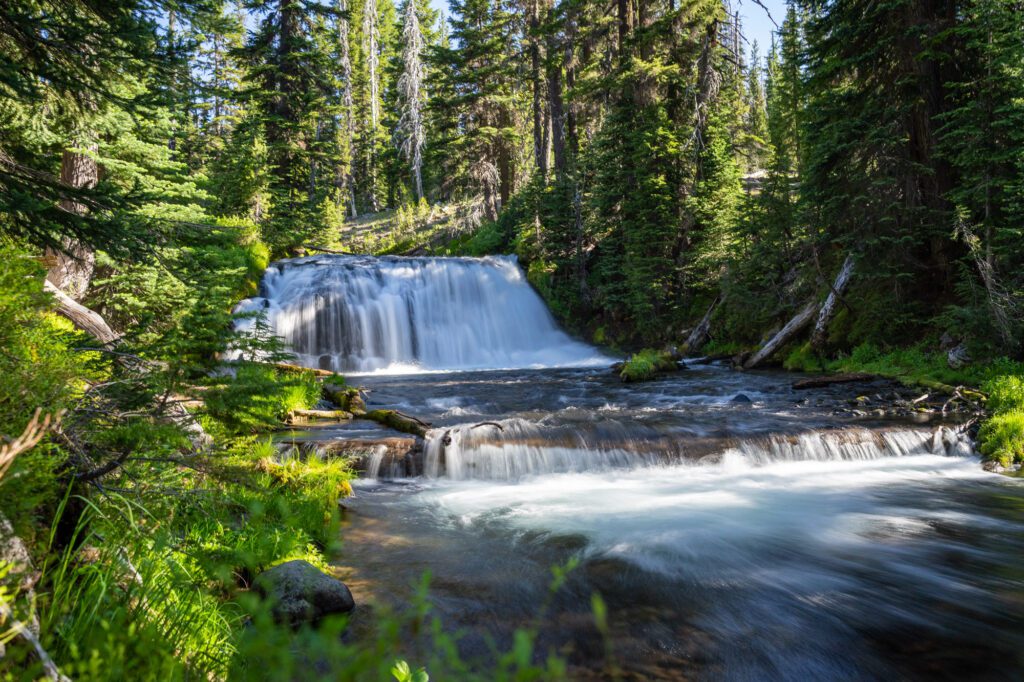
And if you’re really craving a workout, try the (very difficult) non-technical climb to the top of South Sister.
The Columbia River Gorge
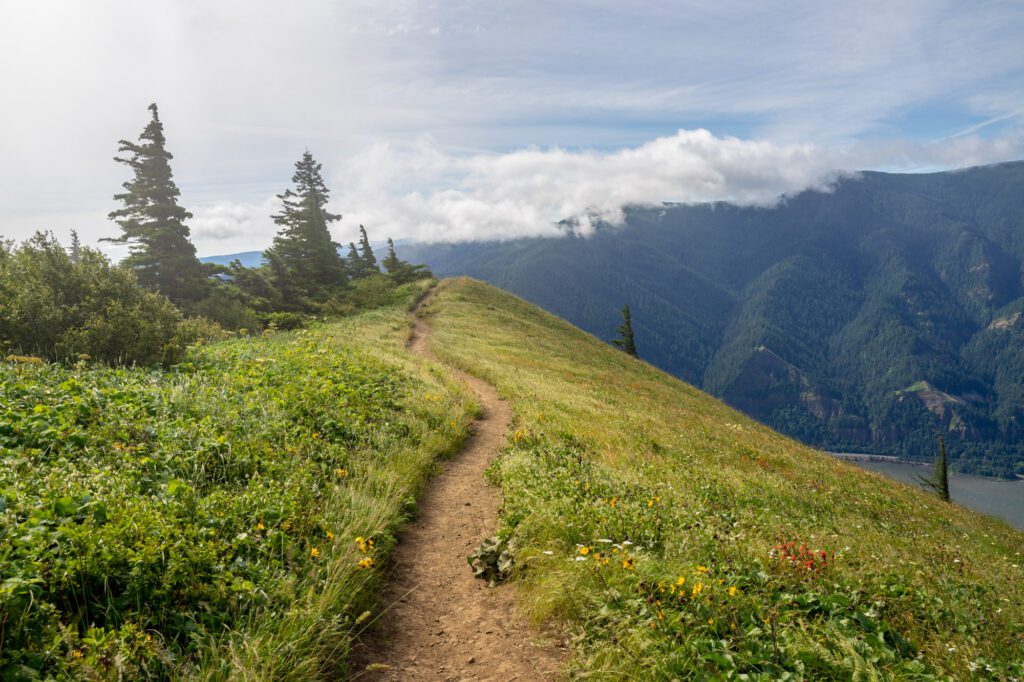
Often dubbed Washington and Oregon’s playground, the Columbia River Gorge is more than 80 miles of jaw-dropping beauty and no matter where you’re coming from this should be on the top of your list for things to see in Oregon.
Formed by volcanic flows three million years ago, then carved out by the Missoula Floods around 15,000 years ago, what remains now are towering cliffs and ridges that flank the mighty Columbia River below.
The Gorge is home to some of the best hiking in Oregon (though if you want the views without the hiking, the Vista House along the Historic Columbia River Highway is a great alternative), and I’ll break down your options into three categories: waterfalls, wildflowers, and views.
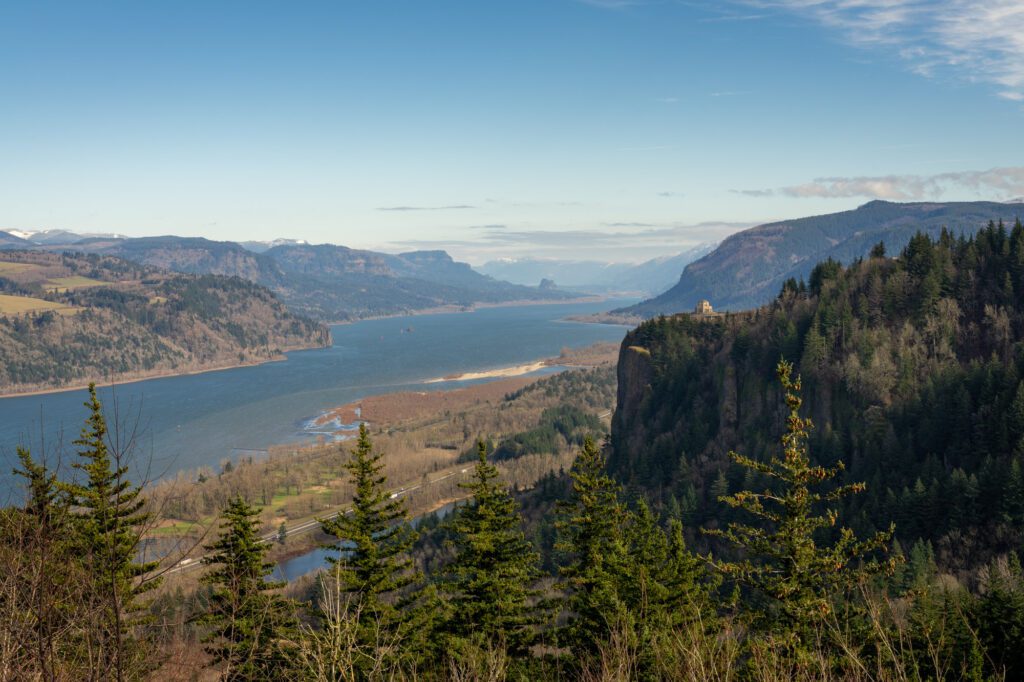
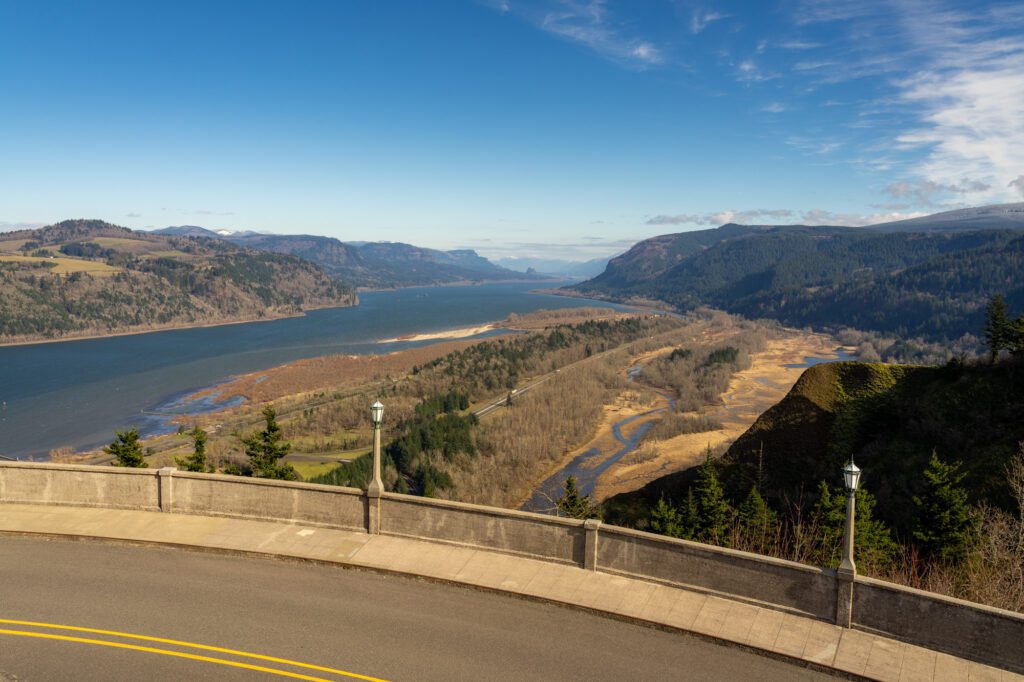
And, though this is technically an Oregon bucket list, I will be throwing out a couple options for Washington-side hikes because we’re all just one big family, right?
Waterfalls: The Gorge is known for its waterfalls, and there are over 90 of them on the Oregon side alone. The mother of them all is Multnomah Falls, the 627 foot masterpiece of the Gorge. Multnomah Falls is the busiest natural recreation site in the entire Pacific Northwest with over two million visitors each year, so be prepared for crowds and go early in the day or mid-week to make it more manageable. However, there are lots of other incredible falls to see, notably Latourell Falls, Punchbowl Falls, Wahkeena Falls, and Dry Creek Falls.
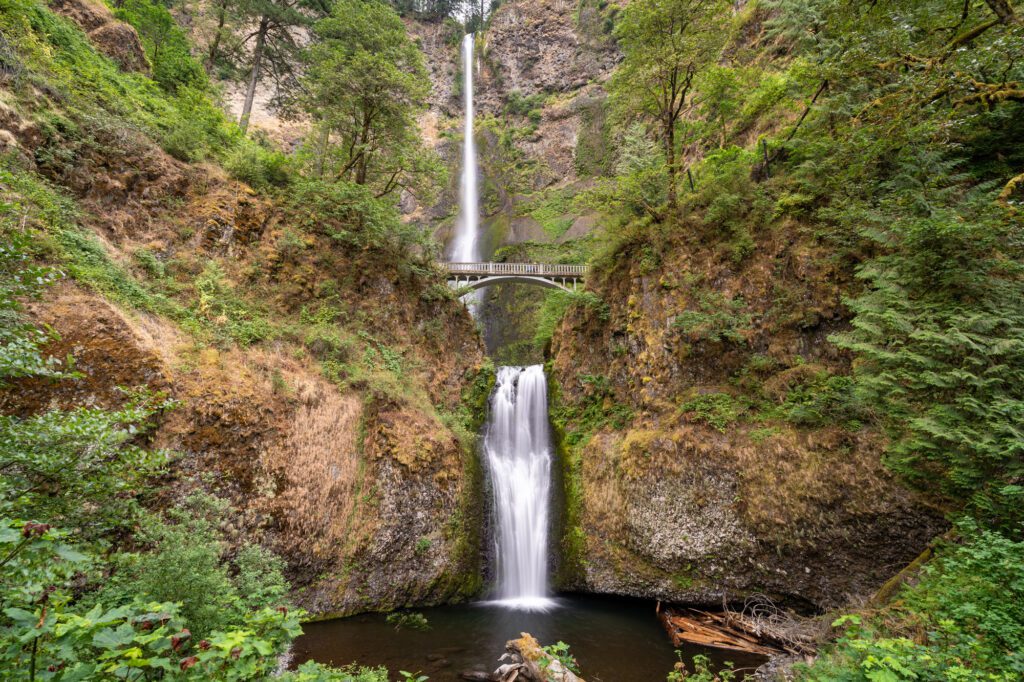
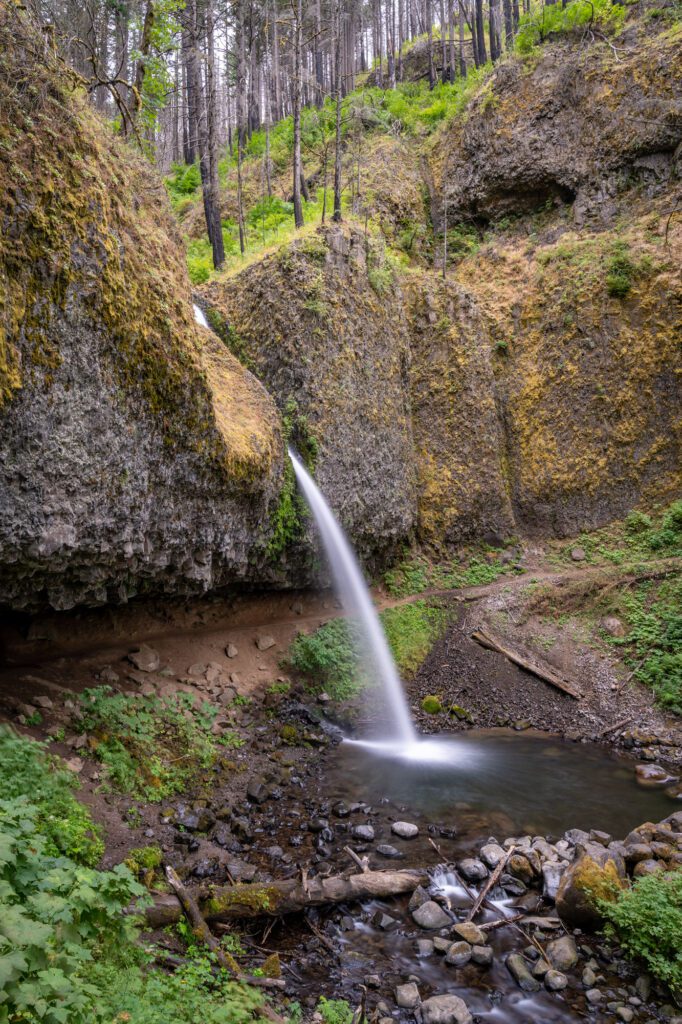
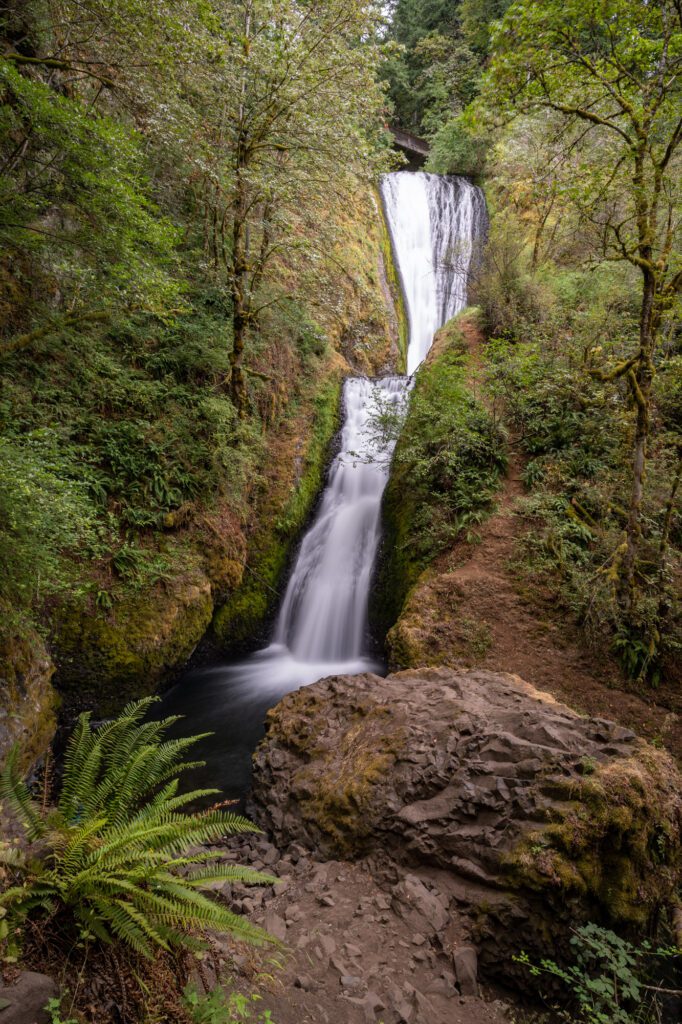
Wildflowers: Wildflowers will be in bloom in late spring and early summer and the best places for viewing are mostly on the Washington side. The most popular spot is undoubtedly Dog Mountain, but it’s also one of the hardest and busiest hikes in the area (and you have to obtain a special permit on the weekends during wildflower season). This isn’t to dissuade you from going (it’s popular for a reason), but only to let you know you’ll need to plan ahead. Luckily, there are other comparable wildflower hikes like Coyote Wall and Tom McCall Point.
Views: Last but not least are the spectacular views that the Gorge provides! My favorite spot on the Oregon side is Larch Mountain, one of the highest peaks in the Gorge at 4,062 feet. From the top, you’ll get 360 degree views of St. Helens, Adams, Rainier, Hood, and Jefferson! There are several ways to the top, but you can only drive up there from May to November when the access road is open. For those who like a long haul, this 15 mile hike starting at Multnomah Falls is incredible and weirdly doesn’t feel as long or difficult as you’d imagine. Alternatively, for those who like a winter hike, follow this trail but you’ll need to park about a mile down the road where the gate is closed around milepost 10. Other honorable mentions for views are Angel’s Rest and the Hamilton Mountain loop hike (on the Washington side).
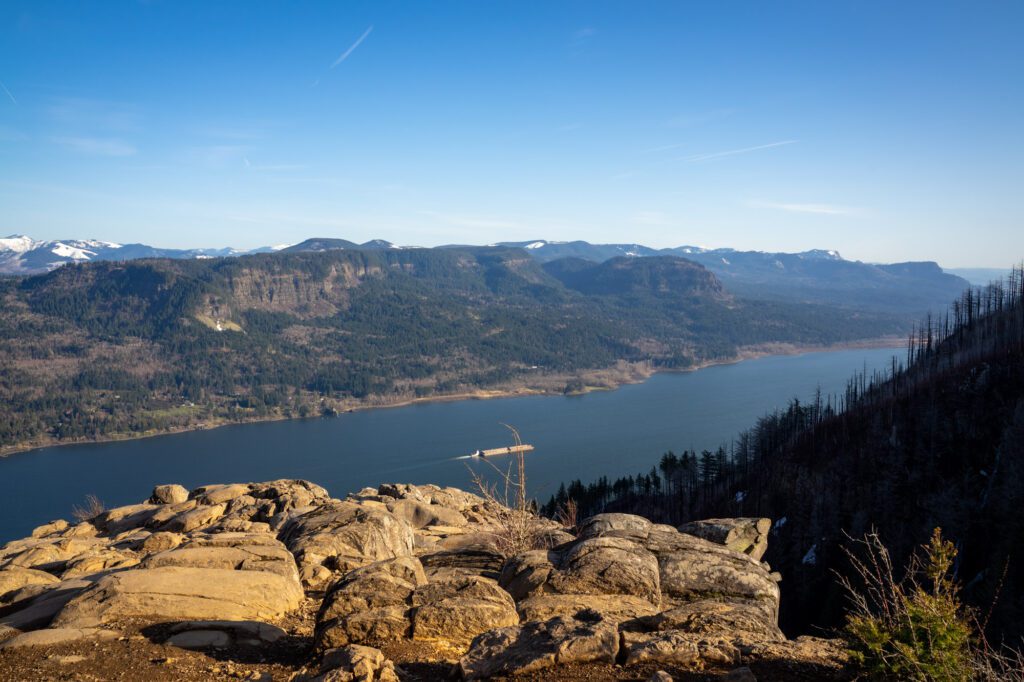
Read More: 12 Mesmerizing Hikes in the Columbia River Gorge
Crater Lake National Park
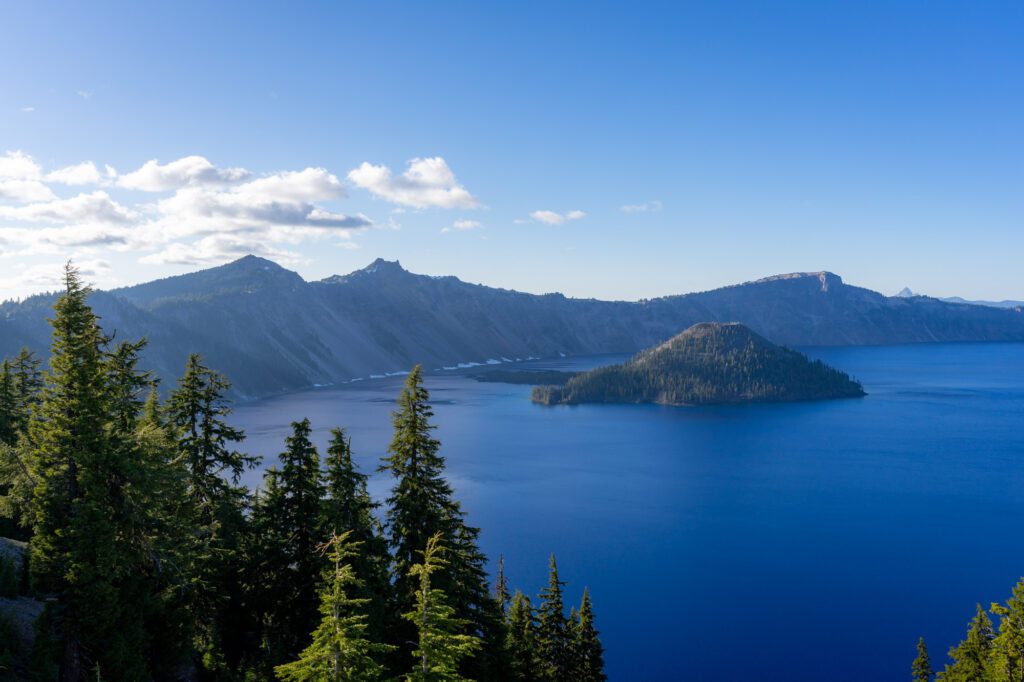
As the only national park in Oregon, Crater Lake should be on anyone’s bucket list, not just Oregonians. Crater Lake is not the result of a crater falling to earth like I believed as a kid, rather from a volcano that blew up around 7,700 years ago (which technically means it should be called Caldera Lake, but I’ll let this one slide).
If it hadn’t blown its top, the mountain (Mount Mazama), would have stood at around 12,000 feet making it the tallest peak in Oregon. But alas, now we’re stuck with a shockingly blue, pristine, deepest-in-the-United-States lake.
Crater Lake deserves more attention than these two puny paragraphs, so if you’re interested to learn more please read here and here.
Here are the highlights for everyone else:
You’ll have three main tasks when you visit: go high, go low, and go around.
There are a handful of great hikes in the area and conveniently, none of them are too long. For views of the lake and surrounding area try the shorter Watchman Peak or the slightly longer Garfield Peak.
You’ll also be doing a real disservice to yourself if you don’t go down to the lake itself and the only way to do that (legally) is on the Cleetwood Cove Trail.
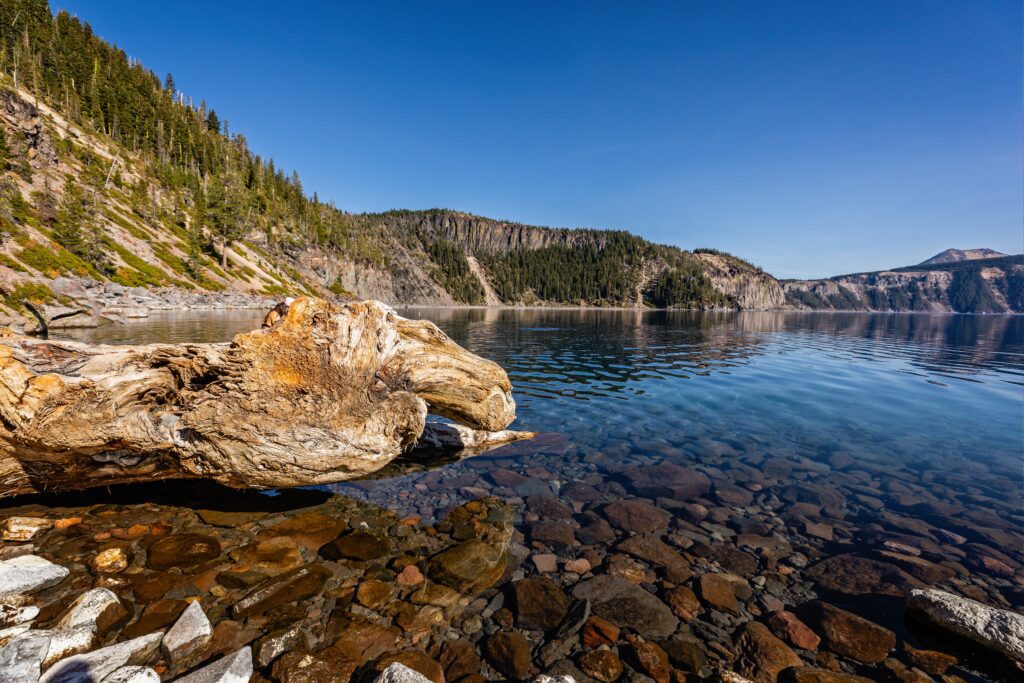
Lastly, after you’ve checked your hikes off the to-do list, it’s time to drive around the lake on the ridiculously scenic Rim Drive, but you should check conditions first as the full route is only open during the summer.
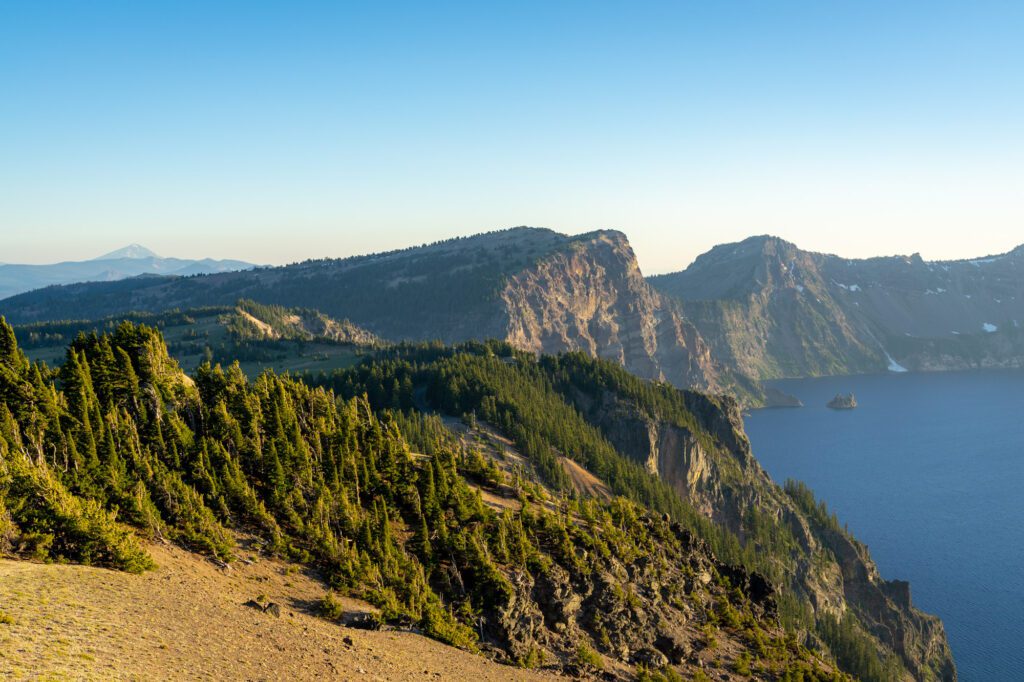
Read More: How to Plan an Amazing Crater Lake Itinerary + 7 Incredible Hikes in Crater Lake National Park
Enchanted Forest
This is my happy place, y’all.
Enchanted Forest is a theme park located about an hour south of Portland and since I was a wee bairn it’s been one of my favorite things to do in Oregon; I’m sure all Oregon kids have a special place in their heart for it.
It was dreamed up and built by a local family starting in 1971 and has stayed locally-owned and operated ever since. There are a couple knock-off Disneyland rides, a truly creepy haunted house (like I don’t know how they let kids in there . . . or maybe I’m just a wuss), storybook villages, and cheesy performers—it’s a little chintzy, but just so delightful and both kids and adults will have a good time!
Hood River
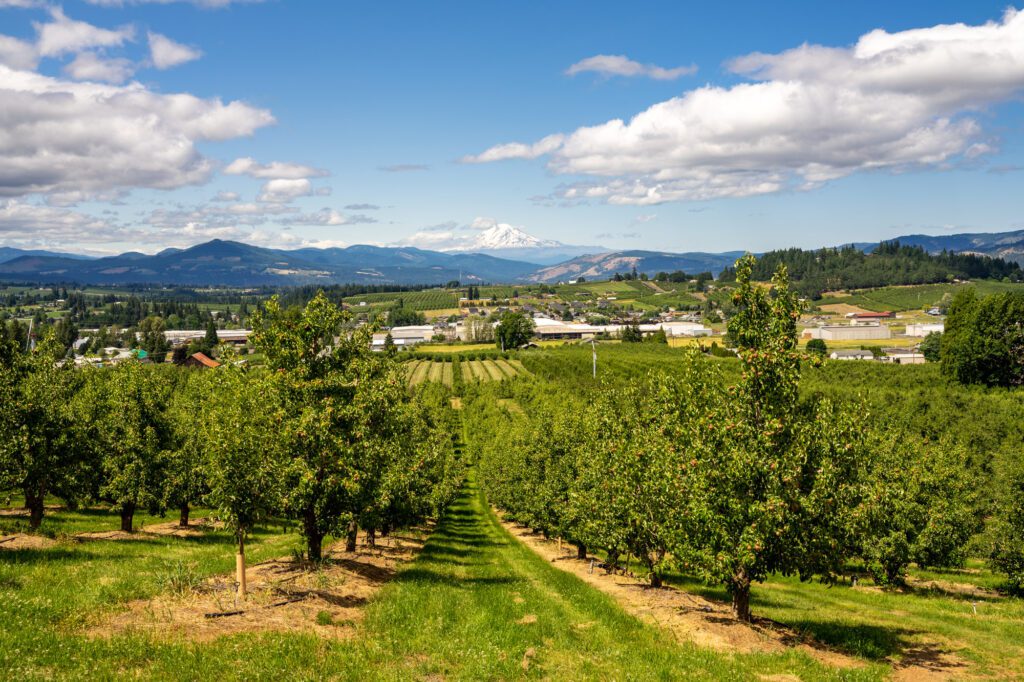
An hour’s drive east of Portland sitting on the Columbia River is the city of Hood River, a mecca for wind and kite surfers from all over the country.
The city is small and quaint and among other things, it’s known for its food scene with exceptional restaurants like Broder Øst, The Mesquitery, Kickstand Coffee & Kitchen, and Solstice Wood Fire Pizza.
It’s also the perfect place to grab a beer after a satisfying hike in the Gorge, or to head out for a drive (or bike ride) on the 35-mile Fruit Loop, a tour through the Hood River Valley’s orchards, wineries, breweries, distilleries, cideries, fruit stands, and lavender fields.
In addition to its proximity to hiking trails in the Columbia River Gorge and snow sports on Mount Hood, the city is very committed to their water sports. Rent gear and get lessons in windsurfing or kiteboarding right in town at Big Winds, and try your hand in the beginner-friendly area of the Columbia called The Hook.
There’s also phenomenal white water rafting just across the river in White Salmon (and the fine folks at River Drifters can help you out!).
Read More: 12 Amazing Things to Do in Hood River: A Complete Trip Planning Guide
The Mckenzie River Scenic Byway
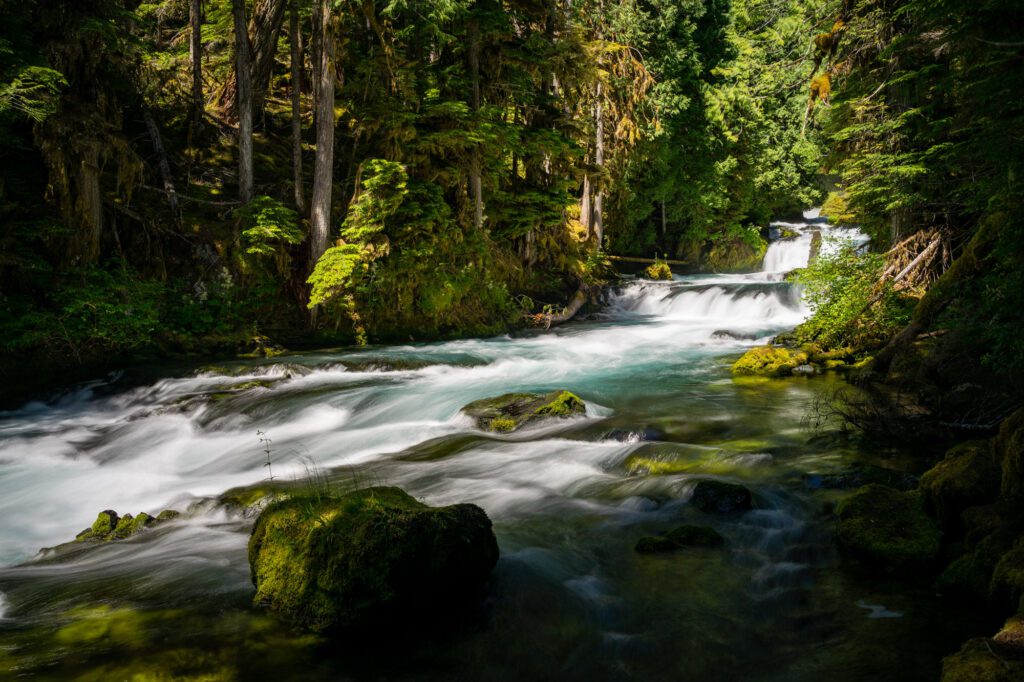
Just east of the hippie town of Eugene, lies the remarkably blue and serene Mckenzie River. Drive along OR-126 to experience the 34-mile stretch of the Mckenzie River Scenic Byway, an area known for its fly-fishing, crystal-clear waters, and lush forests.
For you non-car adventures, there’s also a 26 mile long thru trail that follows the river and is popular with both hikers and mountain bikers.
The most impressive stop on the route is Tamolitch Pool (also called the “Blue Pool”) that I’ve recently learned was formed from the river traveling underground through a lava tube then rising up to make this mind-blowingly beautiful basin. Just a few miles further down the road is your next required stop to see Sahalie and Koosah Falls.
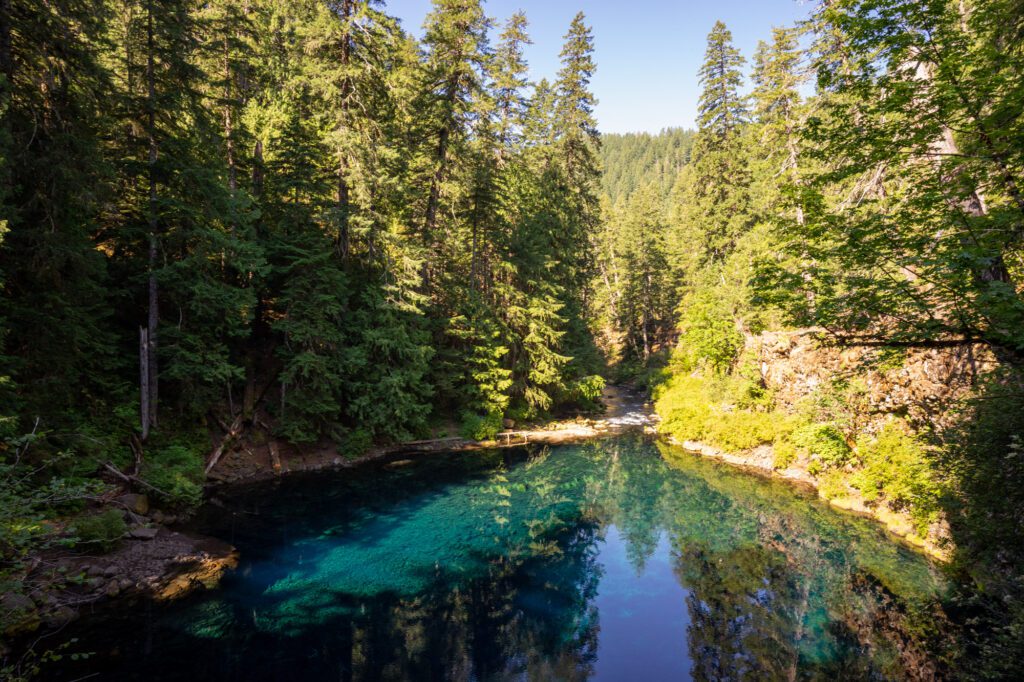
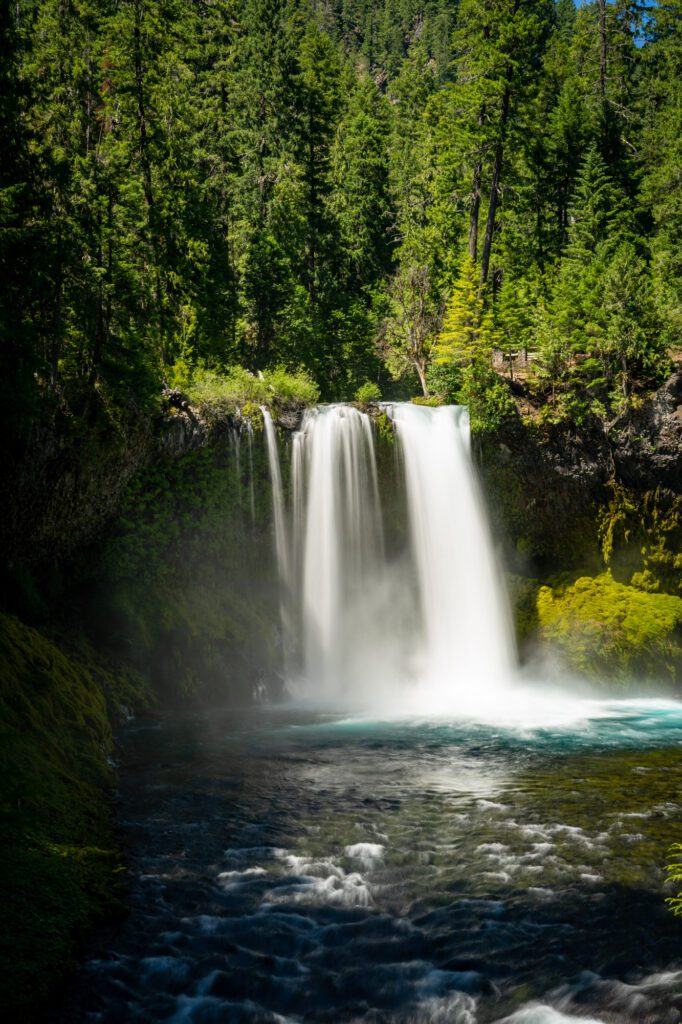
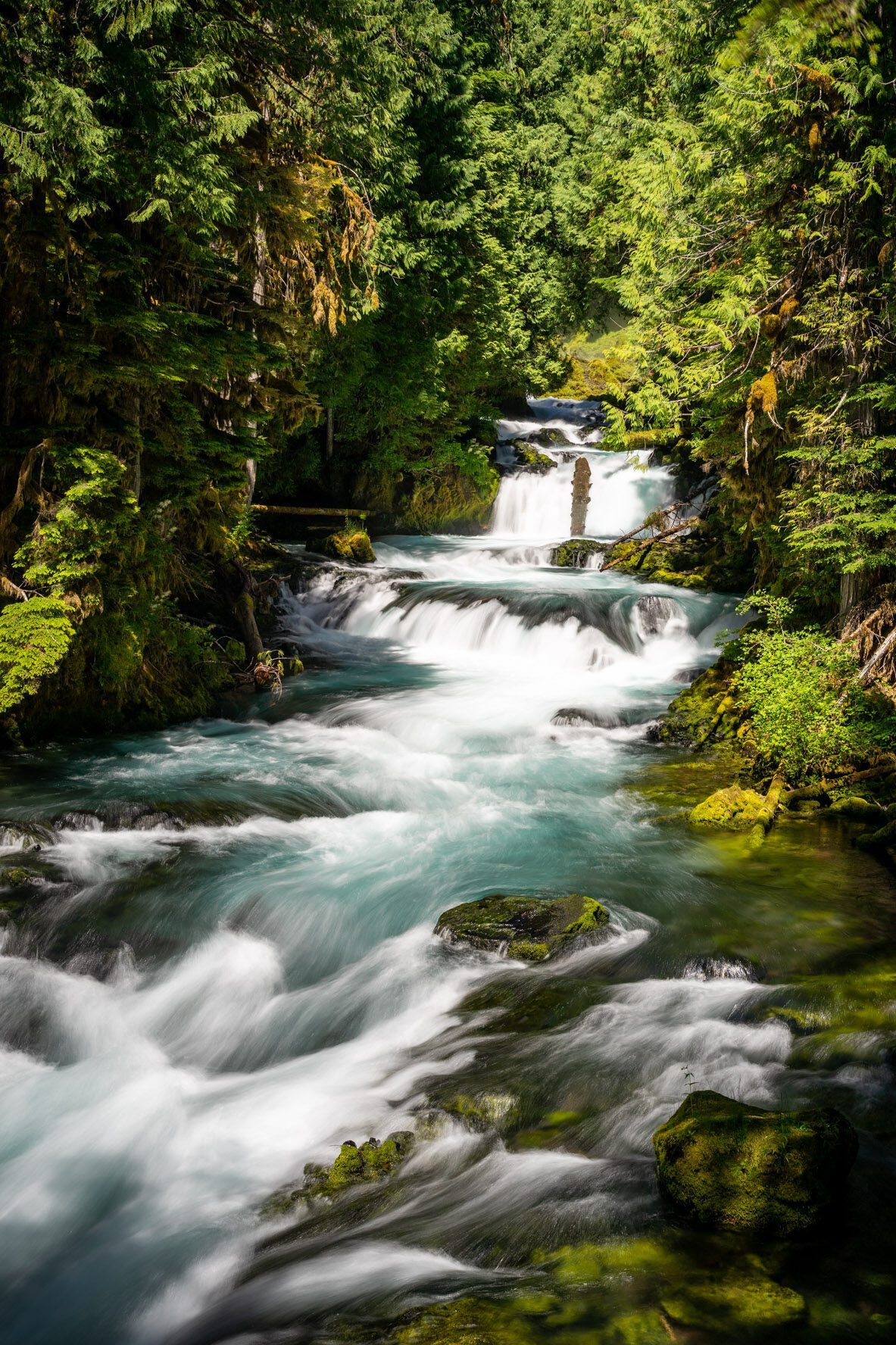
If you’re not up for another hike, you can still view Sahalie Falls from a drive-up viewpoint. Last but not least, there are hot springs to enjoy!
Belknap Hot Springs is available for both drop in and overnight guests, or you can drive just a bit out of your way to the smaller, day-use only Terwilliger Hot Springs (but everyone calls them Cougar Hot Springs).
Mount Hood
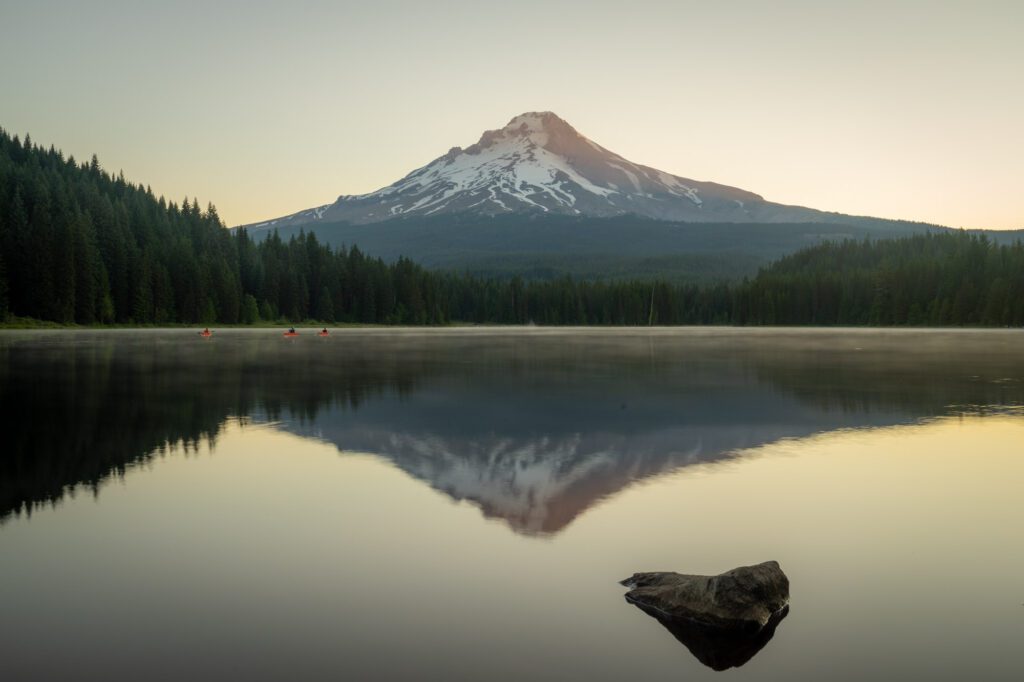
Mount Hood is an outdoor-lover’s paradise with winter sports in the snowy months and hiking and camping in the summer. Situated east of Portland and south of Hood River, most activities here are doable as daytime adventures from either of these locations.
However, the area around Hood makes for some exceptional camping, backpacking, or cabining (I may have just made up a word).
If you like to play in the snow, the best options for skiing and snowboarding are Mt. Hood Meadows, Timberline, and Skibowl.
Full disclosure: I am not the right person to advise on these sports (or any sport where you go fast and have no brakes), but what I’ve heard is that Meadows is the biggest and a better all-around choice, but Skibowl is superior for night skiing as well as having some very steep runs (locally referred to as “steep and cheap”).
Timberline has the highest elevation runs so it typically opens earlier and stays open later in the season and they have a terrain park. For you cross-country skiers, you can either hit up Teacup Nordic Snow Park or Mt. Hood Meadow Nordic Center.
In the summer, there is hiking galore and like the Gorge, there’s just too much good stuff to name. Check out my comprehensive guide to hiking at Mount Hood if you want the details.
Some notable hikes are Tom Dick and Harry (many people like the much shorter Mirror Lake Loop Trail that starts out this hike, but it doesn’t do much for me and I much prefer Timothy Lake if I’m looking to cool off!).
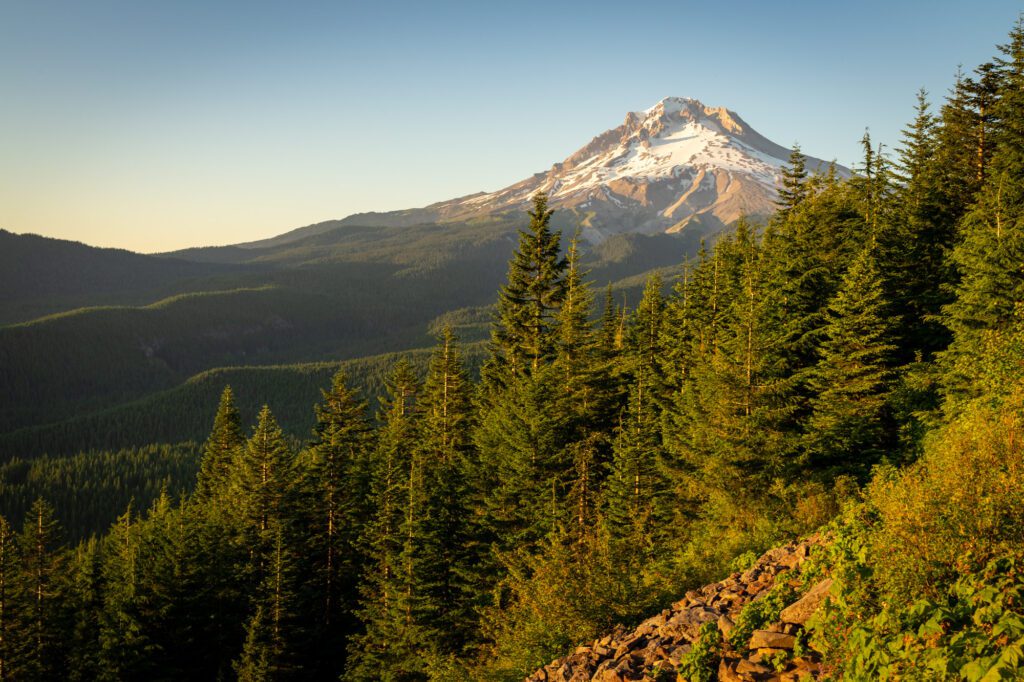
Ramona Falls is a must-do for all you waterfall chasers.
And though it’s long and tough, McNeil Point gets you fully immersed in the alpine scenery and makes for a great overnight backpacking trip.
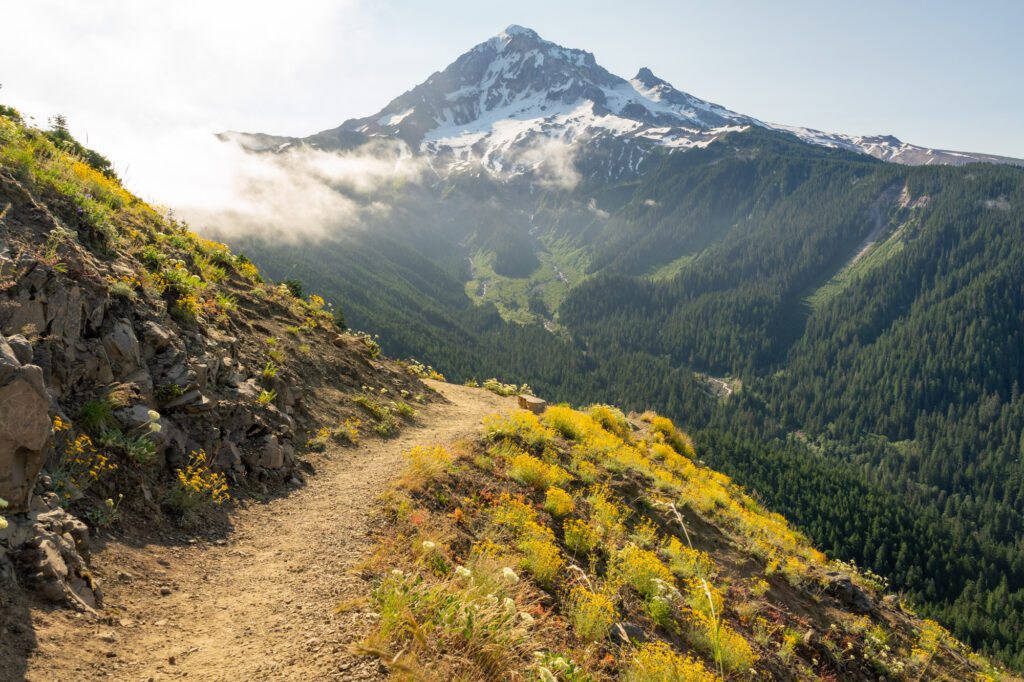
Read More: 11 Jaw-Dropping Hikes near Mount Hood You Have to Hike to Believe
The Oregon Dunes

The first time I set out for the Oregon Dunes, we left Portland later than intended and rolled in just as the sun was setting. We hiked in a few miles, set up camp and watched as the landscape became dark and foreign.
In all my years in Oregon, I had never made it out to the dunes before, and I was kicking myself for taking so long to do so! We were still relatively close to the road and to the ocean just beyond the sandy hills, but it felt like we had stepped onto another planet.
The next morning we tromped through sand, then slogged through waist-deep water in the marshlands, and finally emerged out to the coast and the whole experience left an indelible mark in my memory.
I can’t say enough about this corner of the state, and you should really go even if it’s just for the day. And, for those of you who aren’t campers, you can experience the dunes in a radically different way by renting a dune buggy or ATV at Spinreel in nearby North Bend.
The Painted Hills
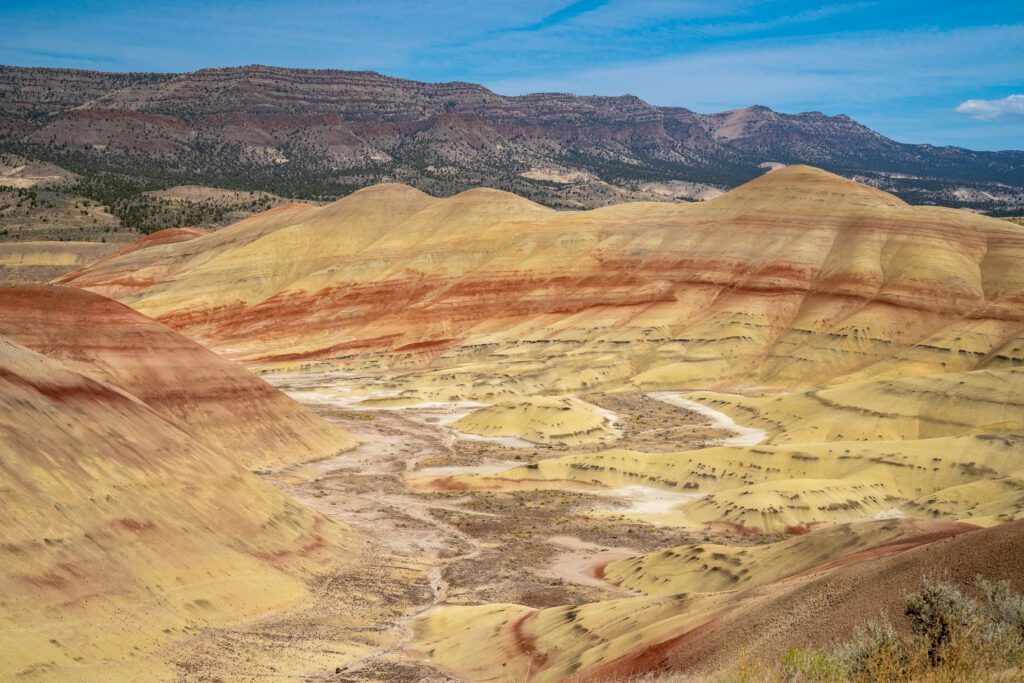
It takes about four hours to drive to the Painted Hills from Portland, which makes it a great camping destination.
Just north of the very small town of Mitchell (that used to be known for having an actual bear named Henry that lived in a two-story cage right off the main drag. Reportedly, Henry has now moved out to a ranch) lies the Painted Hills National Monument.
If you’ve never seen them before it really does look like the hills have been painted with yellow, red, orange, and black stripes and the colors are most vibrant in the afternoon.
And if you’re at all into geology or paleontology, I highly recommend visiting the Thomas Condon Paleontology Center to see all the fossils that have been found here and during the week there are actual paleontologists that you can watch work!
Pendleton Round-Up
Next to the Alvord Desert, this is the only other item on the list I haven’t done personally.
I’ve actually had a long-running fantasy of winning the lottery and paying for all my friends to spend the week at the Pendleton Round-Up, and I’d buy them new cowboy boots and Stetson hats and Wranglers and large belt buckles. It could happen.
Until then, it’s possible for those of even simple means to enjoy this annual rodeo that’s been running for over 100 years. They have concerts, parades, bucking broncos, rodeo clowns, cowboys and cowgirls late night shenanigans, and nightly pageants that honor the local indigineous culture.
Plus, it’s almost all volunteer-run and the whole town pitches in to accommodate the over 50,000 people that visit just for the Round-Up.
Yes, it’s only one week out of the year (second week of September), but it sounds like so much fun!
Portland
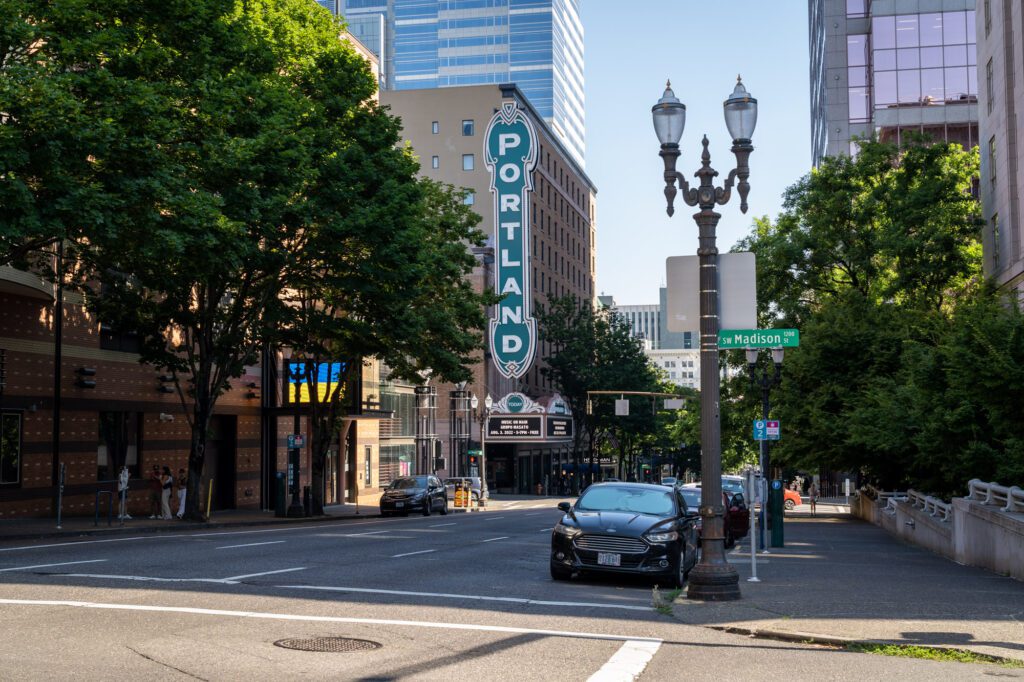
Portland is the largest city in Oregon, with over 2.5 million people in the metro region. It’s the best big city in the U.S. (fact), and one could easily spend their whole life here (and it’s looking more and more likely I’ll do just that.)
Like its sister city, Seattle, Portland sees a good amount of gray skies and rain in the winter, but the summers are unbeatable. And really, the rain doesn’t stop you from enjoying all the city has to offer.
Here are just a few things you can experience when you visit the City of Roses.
Food: Portland finds its way on best-of lists across the country for its food scene and once you’ve spent some time here you’ll know why. With all the fresh, local produce and wine, Portland is a magnet for food-lovers and chefs. With over 500 food carts and a steady stream of new restaurants mixed with more established businesses, there is ALWAYS something exciting and delicious to eat. It’s almost a futile endeavor to try to list the “best” restaurants here but I shall try, highlighting my personal faves (with menu recos!) in each quadrant of the city. North: Eem (white curry), Northeast: Pine State Biscuits (the Chatfield), Southeast: Apizza Scholls (Paulie Gee), Southwest/Downtown: Fried Egg I’m in Love foodcart (Huevo Mutilation), Northwest/Pearl: Ken’s Artisan Bakery (quiche—any kind).
Beer: Beer culture in Portland is huge due to some innovative craft beer pioneers in the ‘80s, notably Widmer Brothers and Bridgeport Brewery, the latter sadly closing its doors in 2019 after 35 years in the business. But today, there’s no lack of phenomenal breweries and it seems like there’s one on every corner. Like restaurants, it’s hard to make a “best-of” list, but since this is my guide I’m choosing the ones I like! The short list: Little Beast for their barrel-aged beer, Upright for their creative farmhouse styles, Level Beer for their easy-to-drink classics, and Cascade Brewing for their sours.
Washington Park: Washington Park is located in southwest Portland and it really embodies what the city is all about. And though it’s popular with tourists, I legitimately come here ALL. THE. TIME. Hike through the over 2,300 species of trees in the Hoyt Arboretum, see elephants or live music at the Oregon Zoo, zen out in the Portland Japanese Gardens, or literally stop and smell the roses at the International Rose Test Gardens.
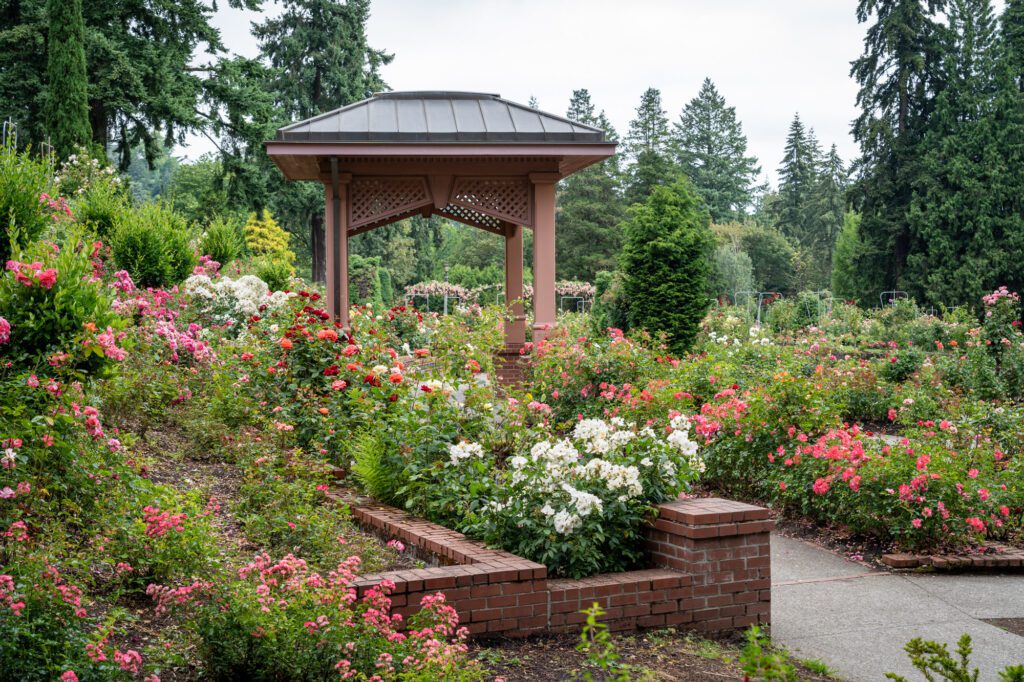
Forest Park: Portland is home to one of the largest urban forests in the country, and with it you get access to over 80 miles of trails right in town! Great for hiking, trail running, dog walking, kid walking, or just communing with nature, Forest Park is a treasure in this city. Stand out hikes are Lower Macleay to Pittock Mansion (and to see the Witch’s Castle) and the Ridge Trail to explore the northern sections of the park and get a great view of the iconic St. Johns Bridge.
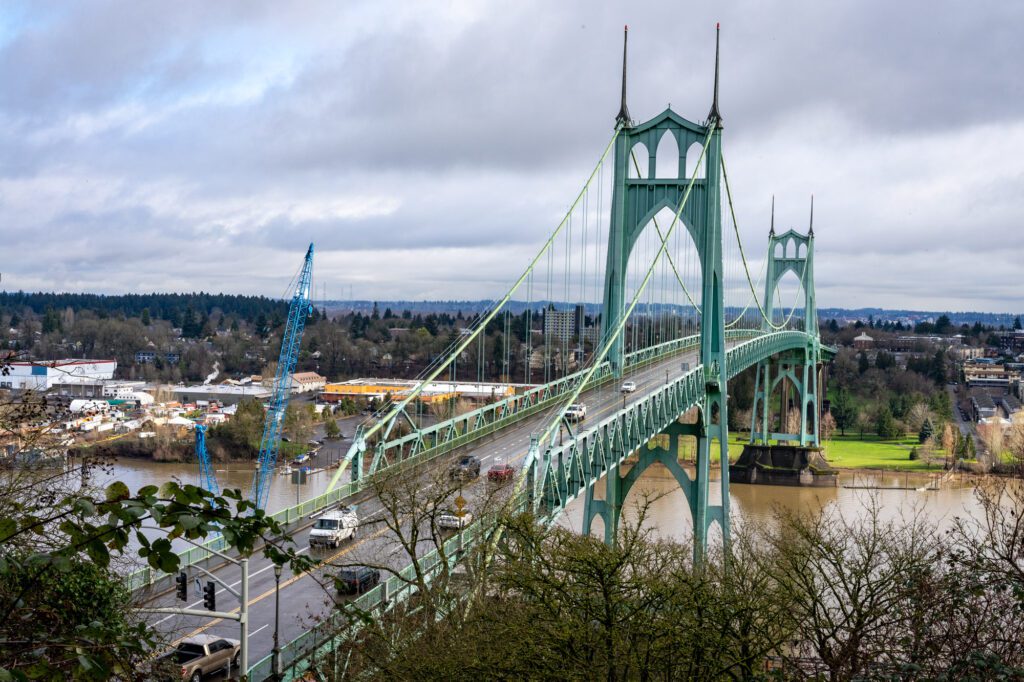
Only in Portland: Some quintessentially “Portland” things that deserve a shout out:
- Read: Powell’s City of Books is the largest new and used bookstore in the world and I would live there if I could.
- Bike: Tons of hotels now offer complimentary bikes for their guests to use, but you can also pick one up at the more than 180 BIKETOWN stations around the city. Biking is often the best way to experience a city, but in Portland this is especially true.
- Shop: Portland Saturday Market is hailed as the “largest continually running outdoor market in the country,” and there’s something here for everyone even if it’s just people watching.
- Dance: Yes, Portland is a bit of a hipster paradise, but with that comes an incredible music scene! Check out distinctive venues like the Crystal Ballroom, Revolution Hall, and Mississippi Studios.
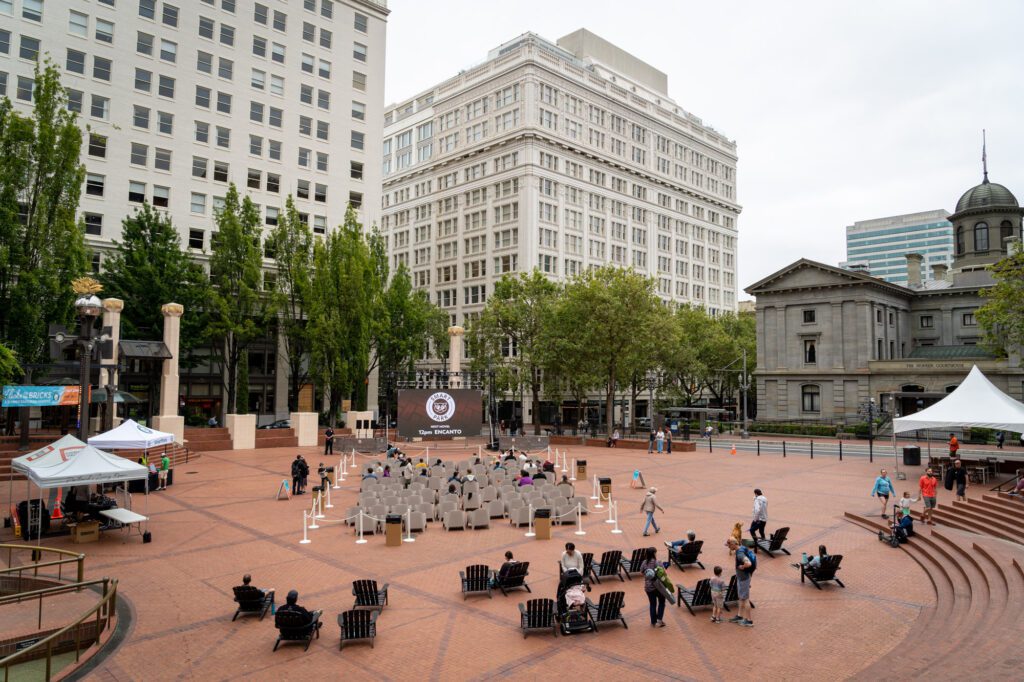
Looking to explore Portland? We have plenty of other Portland travel guides (written by a Portland local) to help you discover something new and exciting.
- The Best Things to Do in Portland: A Complete Portland City Guide
- How to Spend One Amazing Day in Portland
- How to Spend a Weekend in Portland (Complete 3 Day Itinerary)
- Where to Stay in Portland, Oregon: A Complete Guide to 8 Neighborhoods
- The Best Time to Visit Portland, Oregon (According to a Local)
- The 13 Best Hikes Near Portland, Oregon: Complete Portland Hiking Guide
- 16 Amazing Day Trips from Portland, Oregon
- 12 Perfect Weekend Getaways from Portland, Oregon
- The Best Parks in Portland: A Local’s Take on Portland’s Parks
Samuel H. Boardman Scenic Corridor
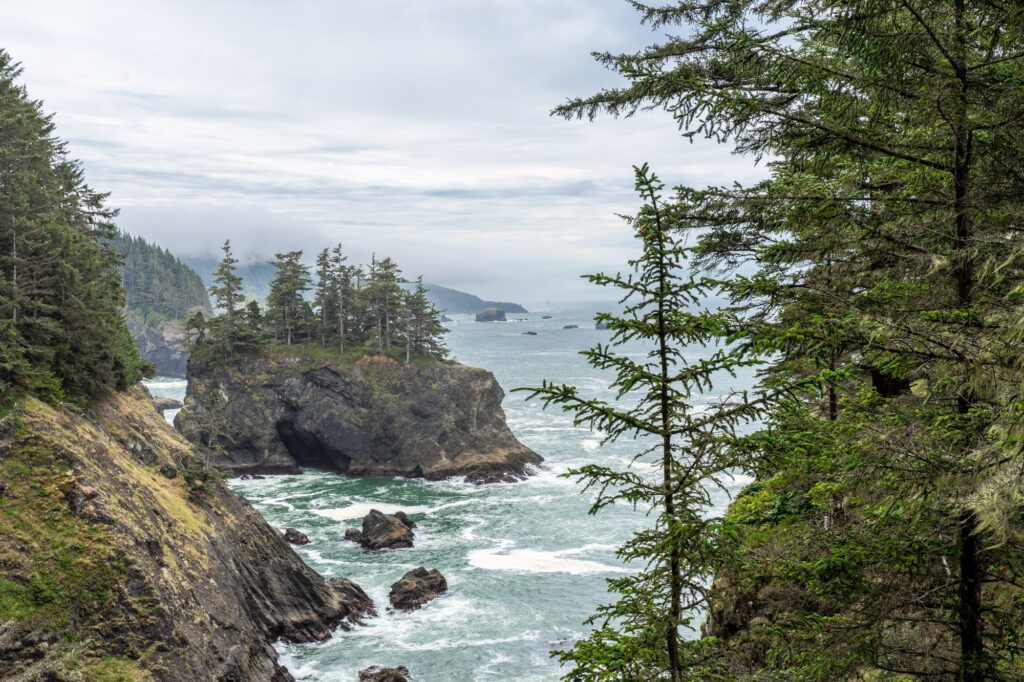
All the way at the bottom of the state, tucked away in its own magical little corner of the southern coast is the Samuel H. Boardman Scenic Corridor.
You really have to make an effort to come here since it’s not really on the way to anywhere, but let me assure you your hard work will be well rewarded as this is hands-down one of the best places to visit in Oregon!
The good and bad thing about this area is that you’ll be in and out of your car a lot, which makes it easy to take in the sights, but also—you’ll be in your car a lot. There are about a dozen viewpoints along this 12-mile stretch of coast and while they’re all worth seeing, you’ll need to focus your attention somewhat.
If you’re starting from the north on the 101, a good first stop is the Arch Rock picnic area for gorgeous views, bathrooms, and a short loop hike around the area.
Then make your way a few miles south to Secret Beach where you’ll take the 1.5 mile trail down to the water, but you should only attempt this at low tide.
Your next stop is the Natural Bridges, probably the most iconic section of the corridor. The trail down to the best viewing area is short but steep, so please stay on the trail! I cringe when I see people risking their lives trying to get the best shot for their Instagram.
And although there are even more places to check out, if I have to pick just one more it would be the somewhat steep and treacherous Indian Sands trail.
Silver Falls State Park

Silver Falls is an unbelievable oasis of waterfall majesty and should be on the top of your list for places to see in Oregon.
There are 10—count ‘em—10 waterfalls in the park and they’re not dinky little ones either. Some of them are probably the coolest you’ve ever seen, including the famous 177 foot South Falls that you can actually walk behind.
If it’s any indication, there are multiple falls from Silver Falls on our list of the best waterfalls in Oregon.
By taking this moderately easy 7.4 mile hike, you can see all of them, then enjoy a picnic, bbq or even camp overnight!
Sisters
Probably the cutest town you’ve ever been in. It feels like a movie set and has some of the best selection of food, like, in the whole state (for real, though!).
Must stops are the Sisters Coffee Company for scones and coffee, Sisters Meat and Smokehouse to pick up a deli sandwich on your way out to a hike, and the Sno Cap Drive In for classic burgers, fries, and shakes!
Sisters is also only a 30 minute drive from Bend and if you’re exploring Central Oregon, you may prefer a quieter stay Sisters (check out the Left Coast Lodge) and then drive into Bend for the day. There’s also plenty of great hiking and skiing around you, so this is the perfect spot for the adventure-minded traveler.
Smith Rock State Park
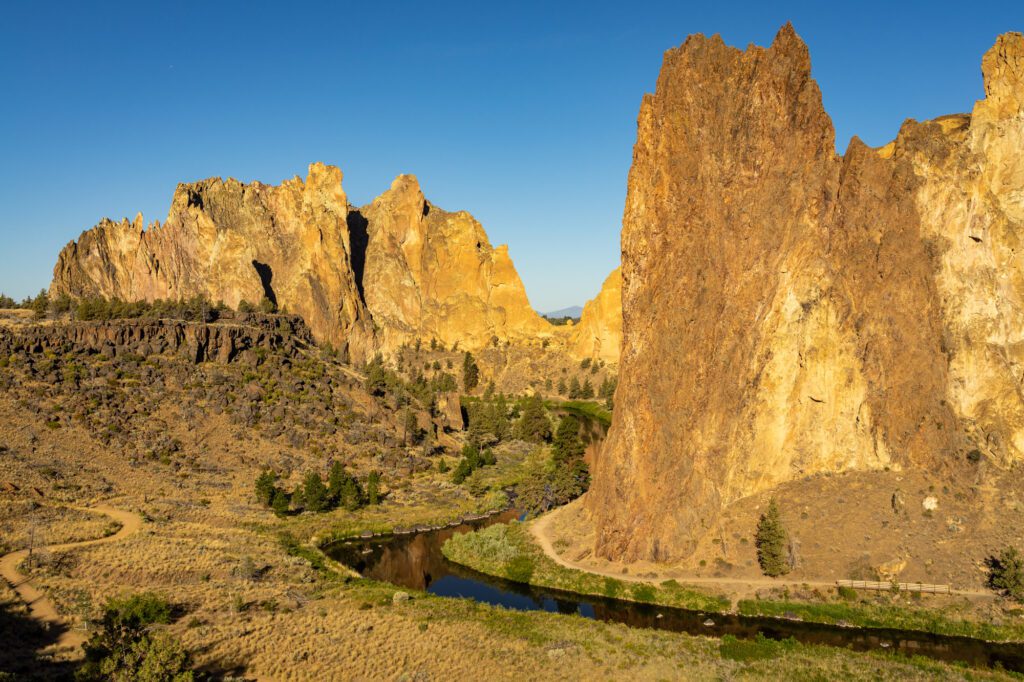
Just 30 minutes north of Bend in Central Oregon is a climber’s paradise, with literally thousands of climbing routes.
Smith Rock State Park is made up of 3,000 foot spires of condensed volcanic ash that now tower over the Crooked River that wends its way through the park. And although it’s most well known for climbing, there’s also great hiking, mountain biking, and even horseback riding.
The most popular route is definitely the six mile Misery Ridge hike, though there’s a shorter (but still hard) 3.5 mile option. I like the longer one because it really lets you see the whole park.
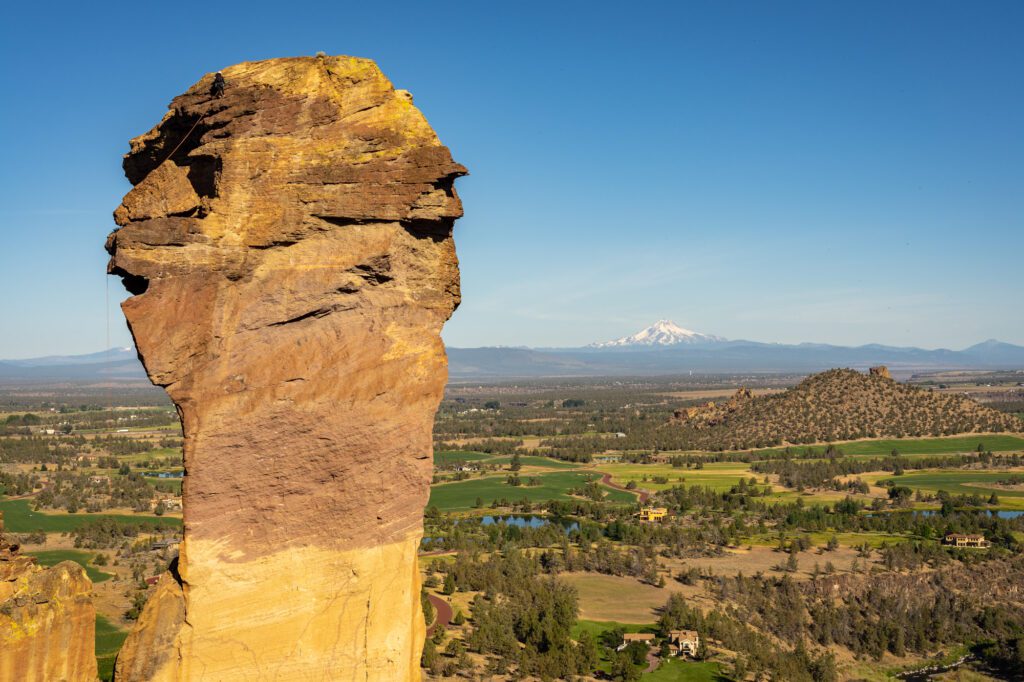
Smith Rock is often accessible year-round, but beware of the hot summer months when temperatures exceed 100 degrees and there’s very little tree cover.
The Three Capes Scenic Route
From Tillamook Bay down to Cape Kiwanda is the 30-mile Three Capes Scenic Route. Here you’ll see some of the most astounding scenery the central coast has to offer including Cape Meares, Cape Lookout, and Cape Kiwanda.
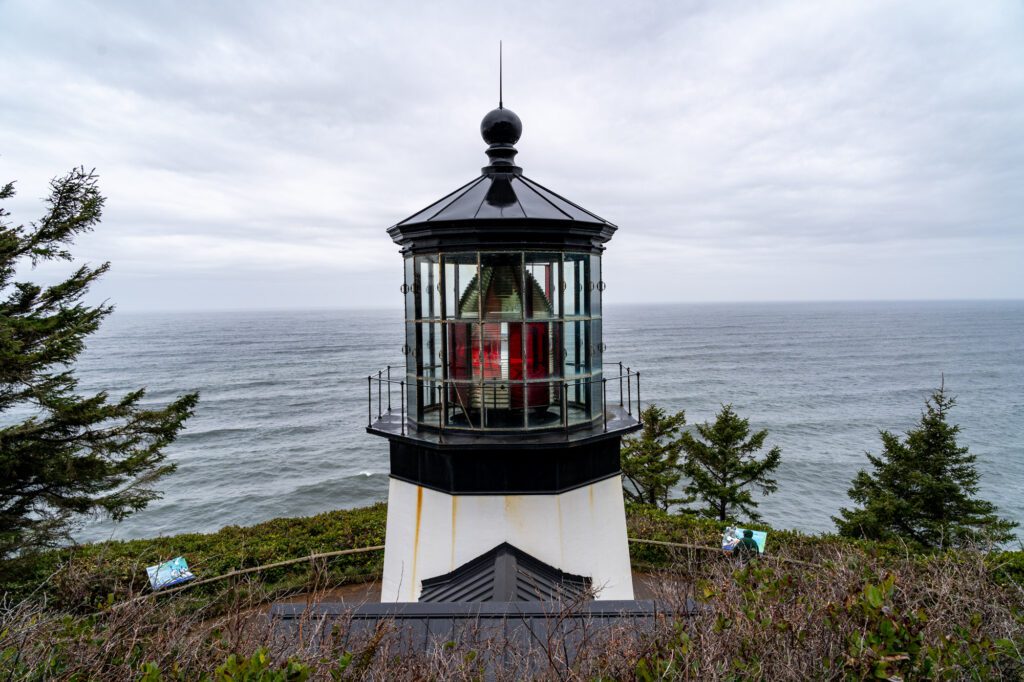
Coming from the northern Oregon Coast, your first stop is Cape Meares which features the state’s shortest lighthouse (weird claim to fame, I know), the ever-popular “octopus tree,” and stunning views down the coast.
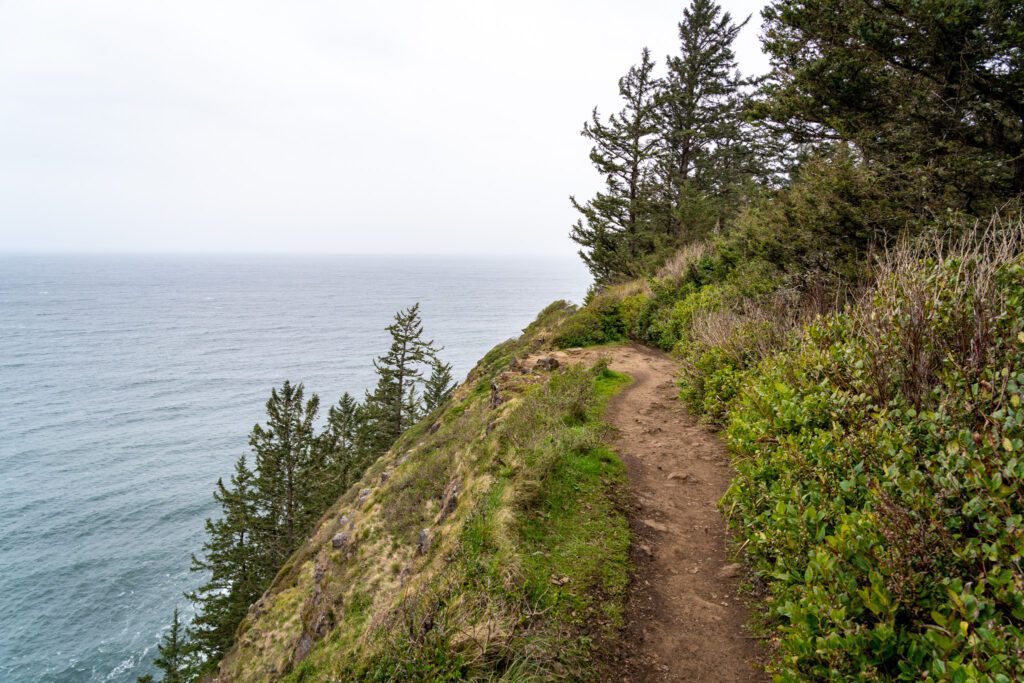
Next, you’ll go to Cape Lookout (which also has a great campground right on the coast) and one of the best coastal hiking trails that takes you right to the tip of the cape. Many hikers report seeing whales from the point, but I’ve never been so lucky. Be prepared for mud unless you’ve had several days of dry weather beforehand.
Your last stop is Cape Kiwanda (my favorite). The headlands are all soft sandstone that the ocean is constantly eroding and sculpting creating an ever-changing work of art.
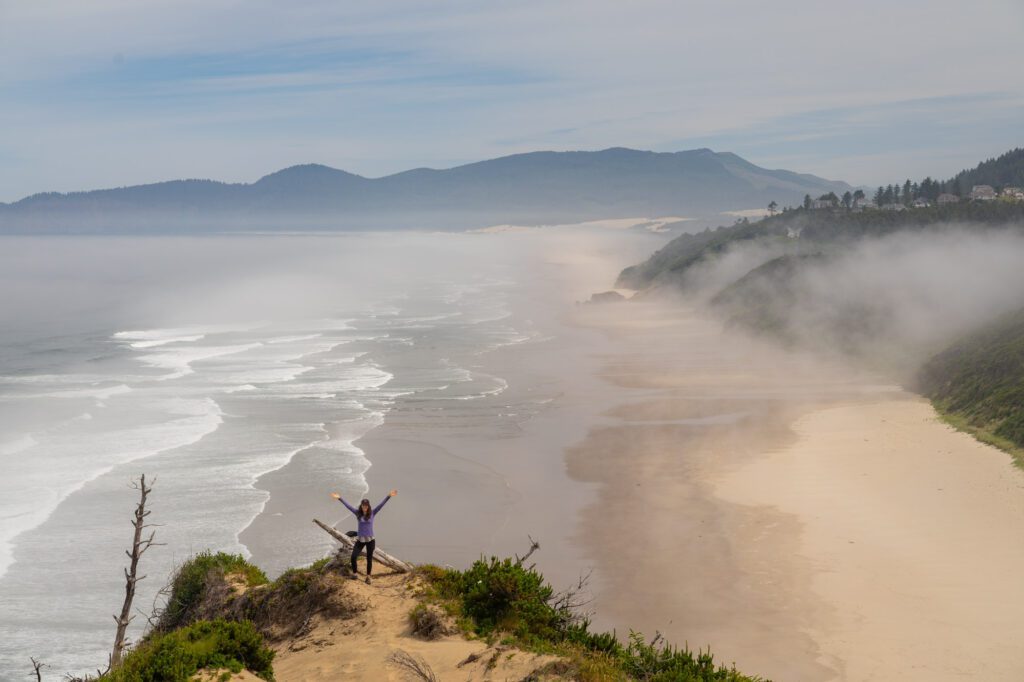
Once you’ve explored Cape Kiwanda, pop into Pacific City and get your fill of delicious food at Grateful Bread Bakery. You can then make this a loop trip by heading north on a lovely inland portion of the 101 up to Tillamook where you might as well pay a visit to the Tillamook Cheese Factory.
The Umpqua River Scenic Byway
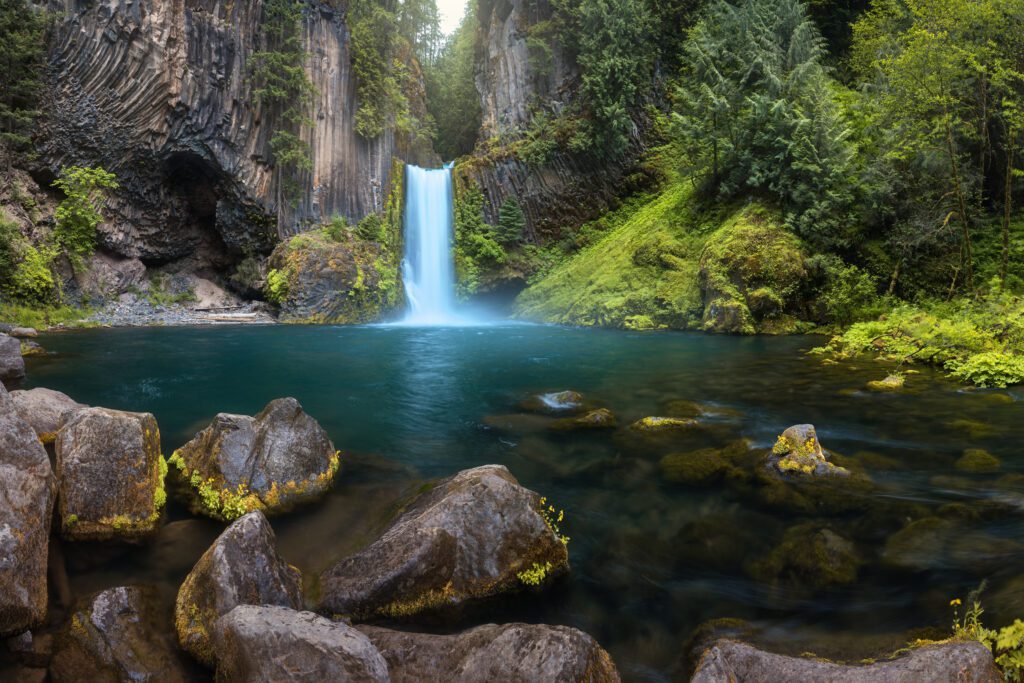
Traveling along the Umpqua River Scenic Byway is a great way to experience some of Oregon’s wine country and then head east through the enchanting Umpqua National Forest.
The Southern Oregon city of Roseburg is a good place to start, and if you’re into wines you may want to spend a little time in the Umpqua Valley that has over 20 wineries dotting the area. A few standouts include the Reustle-Prayer Rock Vineyards, Henry Estate Winery, and Cooper Ridge Vineyard.
After you’ve got your fill of wine, start heading east on OR-138 for your first stop at Fall Creek Falls, then on to the spectacular Toketee Falls.
Just north of Toketee Falls (and actually hikeable to) is the Umpqua Hot Springs. These hot springs aren’t huge so if you’re there on a nice Saturday it might be too crowded to really enjoy it, but if you can hit it up mid week (or better yet, in the winter!), you’ll likely get a pool all to yourself. Note: there WILL be naked hippies there.
The end of this route puts you in striking distance of Crater lake, but if you’re not feeling ambitious enough for that, Diamond Lake makes an excellent destination in its own right.
The Wallowa Mountains
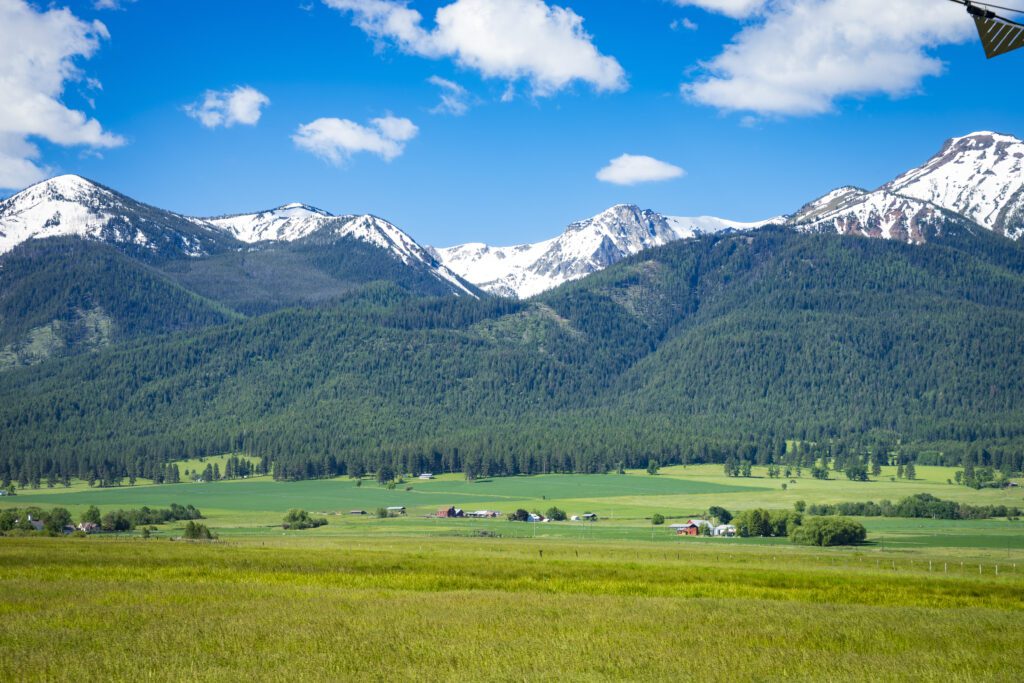
Nestled in the northeast corner of the state, the Wallowa Mountains seem to materialize out of nowhere. If you’re heading over from Portland, you’ll spend a couple hours driving through semi-desert land, but as you start gaining elevation the trees start springing up and before long you’re in the beautiful Wallowa-Whitman National Forest, sometimes called the “Alps of Oregon.”
The Wallowas are far away from anywhere, so plan to stay at least three days. I’ve done a five-day backpacking trip here and regretted not allocating more time.
If you’re down to strap on a backpack and get lost (figuratively, of course), I recommend the 26 miles Wallowa River Loop Trail, but this is best done late summer or early fall as the snow lingers into July. Alternatively, you can make your way to the top of the 8,261 foot Mount Howard by way of the Wallowa Lake Tramway, and if that doesn’t make you feel like you’re in the Swiss Alps, I don’t know what will.
For a more laid-back experience, camp at the gorgeous, glacial Wallowa Lake where you can rent kayaks, paddleboards, or even motor boats at the marina.
Then stroll into the town of Joseph to have lunch at the R & R Drive In or grab a beer at Embers Brewhouse. Or, drive ten minutes north to the equally cute town of Enterprise for the annual Oregon Alpenfest in late September. Brats! Beer! Yodeling!
Willamette Valley Wine Country
Oregon’s Willamette Valley is known throughout the world for its premier pinot-noirs, though in the last few decades it’s stepped up its game in chardonnay, pinot gris, and rieslings as well.
Plan a day (or two or three) wine tasting throughout the region, and stay in the local towns at an AirBnB or an old-fashioned B&B!
Two of the cutest towns in this area are Newberg and McMinnville, and they’re both surrounded by award-winning vineyards like the Stoller Family Estates, Lemelson Vineyards, and Brooks Wine.
A Map of Oregon’s Best Places to Visit
You Might Also Like
- OREGON: How to Plan an Amazing Oregon Road Trip
- OREGON COAST: Planning An Unforgettable Oregon Coast Road Trip
- PORTLAND: How to Spend a Weekend in Portland, Oregon (3 Days)
- PORTLAND: Where to Stay in Portland: The Best Areas According to a Local
- MOUNT HOOD: 11 Breathtaking Hikes at Mount Hood You Have to See to Believe
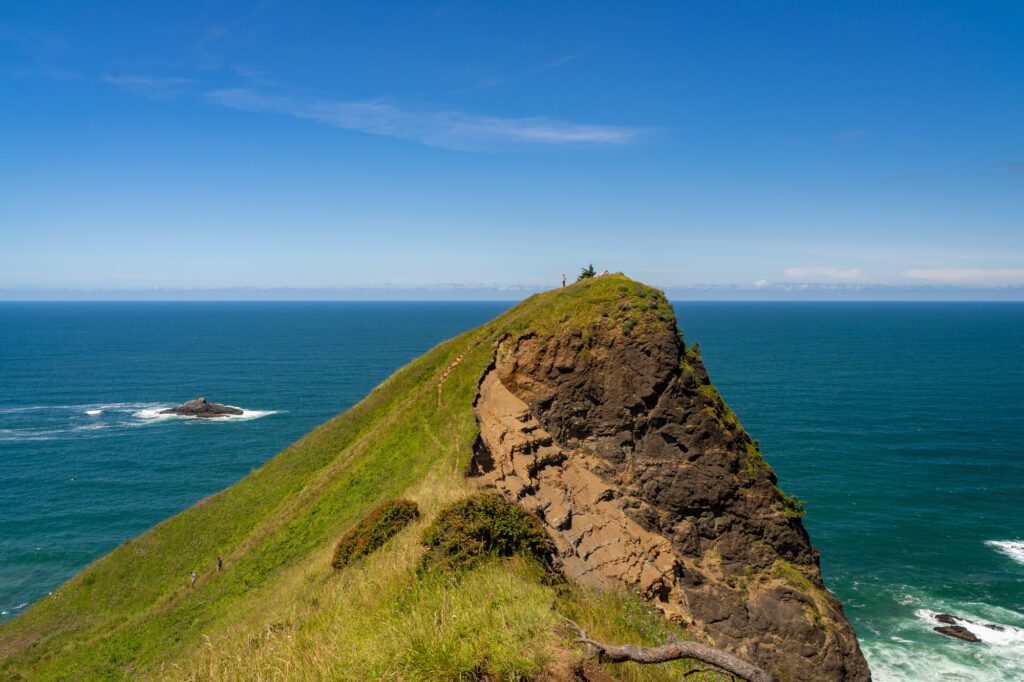
More to Explore in Oregon
Enjoying this guide? We’ve got more Oregon travel guides to help you explore the best of Oregon and fall head-over-heels in love with it like we have.
- 25 Incredible Places to Visit in Oregon, the Best State in the Union
- How to Plan An Unforgettable Oregon Road Trip
- A Complete Oregon Coast Road Trip Itinerary
- 16 Incredible Hikes in Oregon
- One Day in Portland: The Best of Portland in a Day
- A Weekend in Portland: A Portland Itinerary for First Timers (Local’s Guide)
- Where to Stay in Portland: A Local’s Guide to 8 Areas to Stay
- The Best Hikes Near Portland (Local’s Guide)
- The Best Day Trips from Portland
- Amazing Weekend Getaways from Portland, Oregon
- The Best Things to Do in Hood River, Oregon
- What to Do in Cannon Beach: A Complete Getaway Guide
- How to Plan an Amazing Crater Lake Itinerary (1 or 2 Days)
- 24 Amazing Cabins in Oregon (Coast, Mountains, and More)
- Glamping in Oregon: 23 Cool Glamping Spots to Book for your Next Getaway

